








MIPIM has a unique role in gathering the vast world of real estate in one place, from pioneering projects and investment opportunities to dynamic solutions for urban development.
Instead of having to travel the globe, the globe comes to you — with neighbouring stands offering insights into distant geographies, unique developments and regulatory approaches, financial sources and more.
Today, more than ever, the topic of geopolitics has become synonymous with misunderstanding and global uncertainty. By opening the doors to dialogue, we aim to help the real estate community navigate the complexities of the international markets.
This year’s event in Cannes will be characterised by innovation, sustainability, networking and expert insights. Our keynote speaker, Dr Mario Draghi, is a renaissance man who has in turn assumed the role of economist, academic, banker, statesman and civil servant, who served as Italy’s prime minister from February 2021 to October 2022.
Public and private sector collaboration is now so important for driving change in our cities, especially on matters such as housing, development and infrastructure. That’s why we are summoning a roster of mayors from key, global cities to make their ambitions clear.
On a national level, if 2024 was a stand-out year for the number of elections globally, that means there are a record number of new administrations trying to make an impact in 2025.
We will also deliver five stages offering insights, lessons and networking opportunities, highlighting key geographies, megatrends and the industry’s dominant asset classes. Dedicated residential summit Housing Matters!, meanwhile, returns on Monday to explore innovative solutions for the housing sector and drive industry collaboration.
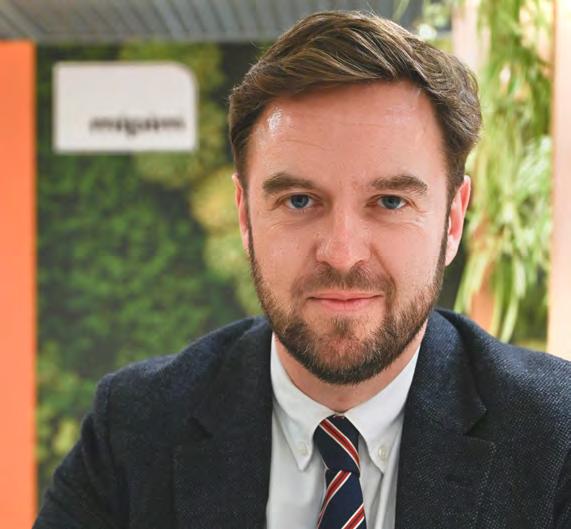
Megatrends under the spotlight include those topics at the heart of society and the real estate industry which drive change in dynamic and indirect ways. Artificial intelligence is one innovation with a huge capacity to change both everyday life and transform industry processes, so we’ve scheduled a series of talks on best practice. Other key themes, including the hunt for talent, explore the benefits of diversity, equity and inclusion for the hiring process, and set up our MIPIM Challengers programme, once again promoting young people.
MIPIM 2025 also looks forward to welcoming the world’s leading institutional investors, fund managers and industry leaders. With investors making up one-third of MIPIM delegates, they will be at the heart of this year’s conference programme, with sessions dedicated to the unique challenges and opportunities they face.





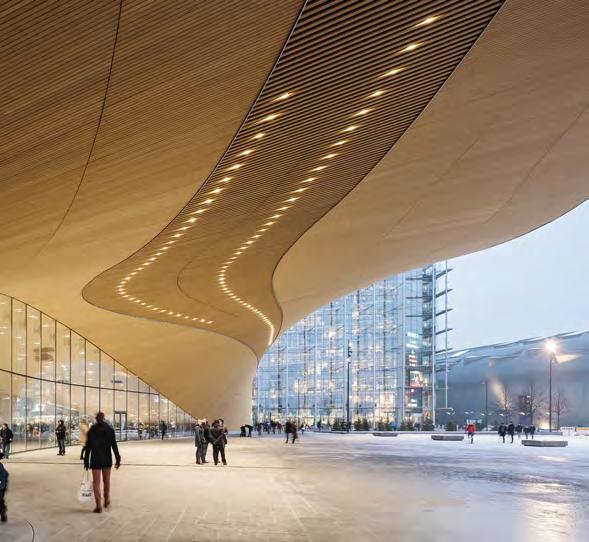


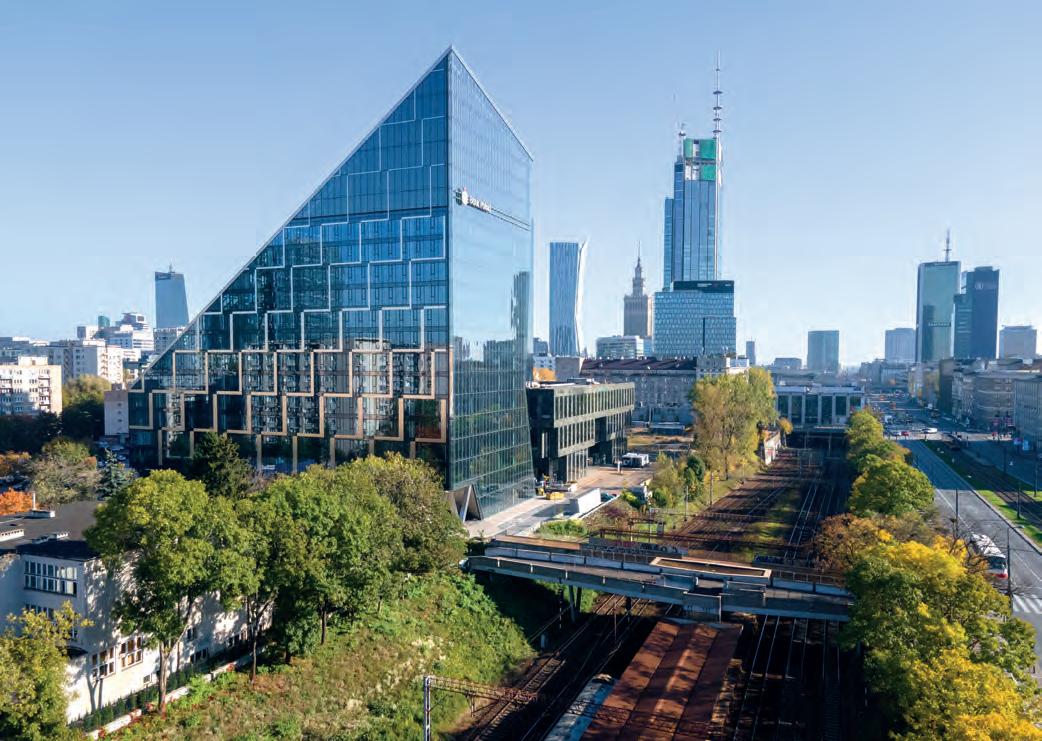



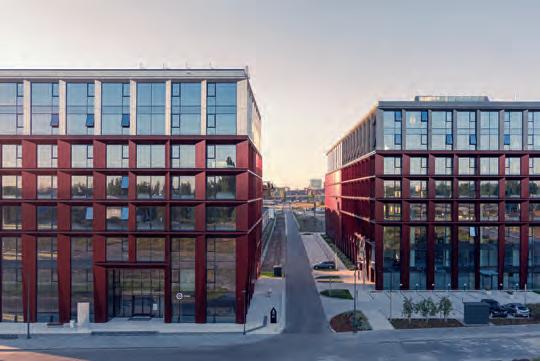
THE COMMERCIAL real estate industry in 2025 is likely to be driven by “strategic opportunities and evolving market dynamics”, according to François Trausch, CEO & CIO PIMCO Prime Real Estate. Trausch said that the climate was one of “cautious optimism”, following the recent cycle of interest rate cuts. However, unlike the rapid post-global financial crisis rebound, he said that recovery was expected to be slow and uneven. “The decline in long-term rates will not match the levels seen in 2021, keeping capitalisation rates elevated and extending the thawing process,” he said. Trausch identified a divergence between public and private markets, with the former showing signs of recovery, as valuations for equity real estate investment trusts (REITs) and collateralised mortgage-backed securities (CMBS) approach 2021 levels. This suggests that private markets may “catch up” in 2025. “Investors should monitor this convergence, as it presents opportunities to align private market strategies with public market trends,” he said.
One trend that has negatively impacted commercial real estate over the past 12-18 months has been decreasing valuations, but Trausch said that valuations are “nearing their bottom”, particularly for Class A properties. However, Class B and C properties, especially in office and life sciences sectors, may continue to face declines. Trausch warned that investors should be mindful of potential distress masked by current delinquency rates and maturity defaults. “As forced sales could increase, further pressure on valuations is possible,” he said. The market is also witnessing a shift in tenant preferences towards higher quality, sustainable assets. “This trend presents opportunities for upgrading properties to core-plus status but also highlights risks for weaker assets facing declining occupancy,” he said. Looking at Europe, Trausch said that the adjustment to a higher interest rate environment would require “a shift in investment strategy”. Rather than relying on low rates, he suggested that investors should seek growth pockets where rent and net operating income

GREECE has been impressing the world with its economic fundamentals following several strong years of performance, according to Marinos Giannopoulos, CEO, Enterprise Greece. “Foreign direct investment in Greece surpassed €6bn in 2023, marking consecutive years of record-breaking investments. This surge is driven by major projects in energy, real estate and infrastructure, reflecting growing international confidence in Greece’s market potential,” he said. “Greece offers a pro-investment climate with tax
breaks, streamlined licensing processes for strategic investments, and subsidies for sectors such as tourism and digital transformation, creating a highly attractive environment for foreign and domestic investors.”
Greece is also at the forefront of the green-energy transition, with renewables accounting for over 50% of electricity generation in 2023.
Landmark projects such as Europe’s largest solar park in Kozani and pioneering wind-energy developments in the Aegean underscore Greece’s role as a renewable energy leader.
(NOI) are expected to rise. Trausch identified promise in the residential sector due to long-term supply and demand dynamics. In the US a housing shortage is anticipated, supporting build-to-rent strategies and existing properties. Multifamily housing in Japan, with its favourable financing conditions and low tenant delinquency, also offers attractive opportunities. Additionally, student housing is experiencing strong rental growth in both traditional and emerging markets. Elsewhere, data centres, particularly in Europe, continue to be a priority investment. “The gap in data-centre capacity relative to population presents significant growth potential,” Trausch said. In contrast, while the life-sciences sector was highly sought after during the COVID-19 pandemic, Trausch said that recent trends revealed reduced tenant demand and new supply challenges.
Overall, the commercial real estate sector in 2025 will be defined by strategic shifts in response to interest-rate changes, evolving tenant preferences and geographic opportunities. “Investors should remain vigilant, leveraging insights to navigate the complexities of this unique cycle and capitalise on emerging opportunities across public and private markets,” he said.
Greece’s digital economy has also experienced growth, attracting investments from tech giants including Microsoft, AWS and Pfizer. He added: “The hospitality sector in Greece presents an abundance of opportunities for investors and operators, spanning diverse niches such as luxury tourism, agritourism, wellness retreats and sustainable ventures. By embracing innovation, sustainability and emerging trends, investors can capitalise on Greece’s dynamic and lucrative hospitality landscape.”
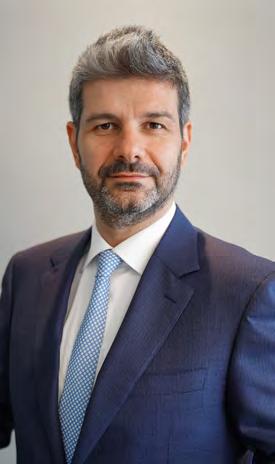

A NEW city in Uzbekistan, New Tashkent, has been dubbed the largest and most ambitious urban development project in Central Asia. Covering an area of 20,000 ha, it is expected to accommodate over 2.5 million residents, along with government agencies, universities, hospitals, and more. The Cabinet of Ministers of the Republic of Uzbekistan has established the New Tashkent City Construction Directorate to oversee this initiative. New Tashkent is designed around both green and water infrastructure, according to Temur Akhmedov, the ecologist of the directorate for the construction of New Tashkent City under the Cabinet of Ministers, and Saidazim Sharipov, architect of the same directorate. The two spokespersons said: “An international team of experts began by creating a framework that incorporates mobility infrastructure, utilities, social facilities and other essential layers over
this green and water layout.
“Instead of conventional transportation systems, the mobility infrastructure will offer residents a multitude of options, including bicycles, scooters and other low-speed mobility devices. Addition-
Plans for the city aim to create a comfortable microclimate, while conserving the region’s most precious resource: water
ally, electric buses, subways and electric cars are integral to New Tashkent’s electrification strategy, which will not include natural gas for buildings.”
The project sets high standards for the buildings, mandating certification from international green building standards including LEED, BREEAM and EDGE. The directorate has established criteria for energy efficiency, effective water
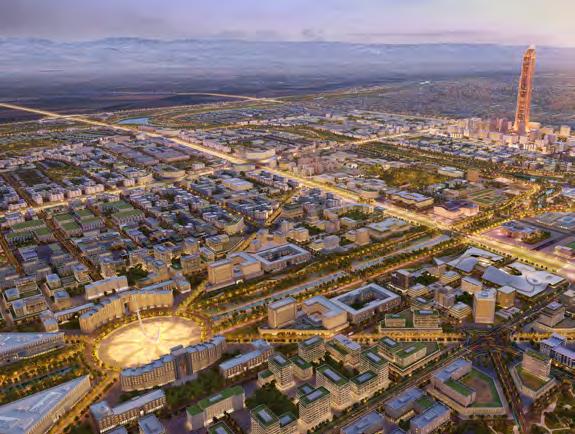
usage and rainwater reuse. These green-building standards aim to reduce energy and water consumption by over 20%. Furthermore, New Tashkent will rely predominantly on renewable energy sources, utilising existing hydro and solar capabilities while developing new ones. The new city’s construction and operational carbon footprint is expected to decrease by over 20%.
The spokespersons added: “New Tashkent is a challenging, ambitious and innovative project. The City of Tashkent boasts a rich history of over 2,000 years, which establishes certain expectations for the new development. The concepts and strategies outlined above represent some of the ways that an international team of experts intends to meet these expectations.”
The Alisher Navoi International Research Centre project, set to be constructed in New Tashkent City, is currently receiving significant global attention. This large-scale initiative is designed by Zaha Hadid Architects, renowned for its futuristic and distinctive architectural works.
FOR OVER 30 years, real estate-backed charity Land Aid has brought together remarkable businesses and individuals from across the property industry in a bid to achieve lasting change. One of the charity’s main goals has become the ambitious and laudable task of ending youth homelessness across the UK. “Land Aid raises money from the industry and allocates it throughout the UK targeting a wide range of communities,” said Redevco CEO, Neil Slater, chair of Land Aid’s board. “No cause is too small, from a tiny women’s shelter in Dundee to a large homeless shelter in London.”
Land Aid also acts as a pro bono agency for the industry, connecting professionals from lawyers to housing experts with
charities in need. The charity drove the provision of some £1m (€1.2m) in pro bono services last year, Slater said. “We also involve other businesses in our goals, such as Vodafone, which has provided sim cards for the homeless.”
To date, Land Aid has attracted the involvement of many pillars of the UK real estate industry, from professional services firms such as CBRE, JLL, Allsop, Avison Young and Carter Jonas, to major developers and landlords including Blackstone, Lendlease, British Land, LaSalle, Segro, Fiera Real Estate and Grainger. Knight Frank has sponsored a major sleep-out slated for February, which will once again see hundreds of people sleeping rough in cities across the UK to raise funds and awareness. Slater said that Redevco has always
been socially engaged throughout its 25 years of existence in line with the “force for good” ethos within the wider group of businesses and philanthropic organisations that the firm is a part of. He added: “Through our Redevco Foundation, we allocate funds to improving the lives and the living environment of the less privileged, as well as focusing on environmental sustainability, and historic and cultural heritage. Our employees select the good causes that are close to their hearts through a ‘Giving Rewards’ initiative.”
Doing Business With Purpose Leaders Perspective Stage Wednesday, March 12 10.00 - 11.00


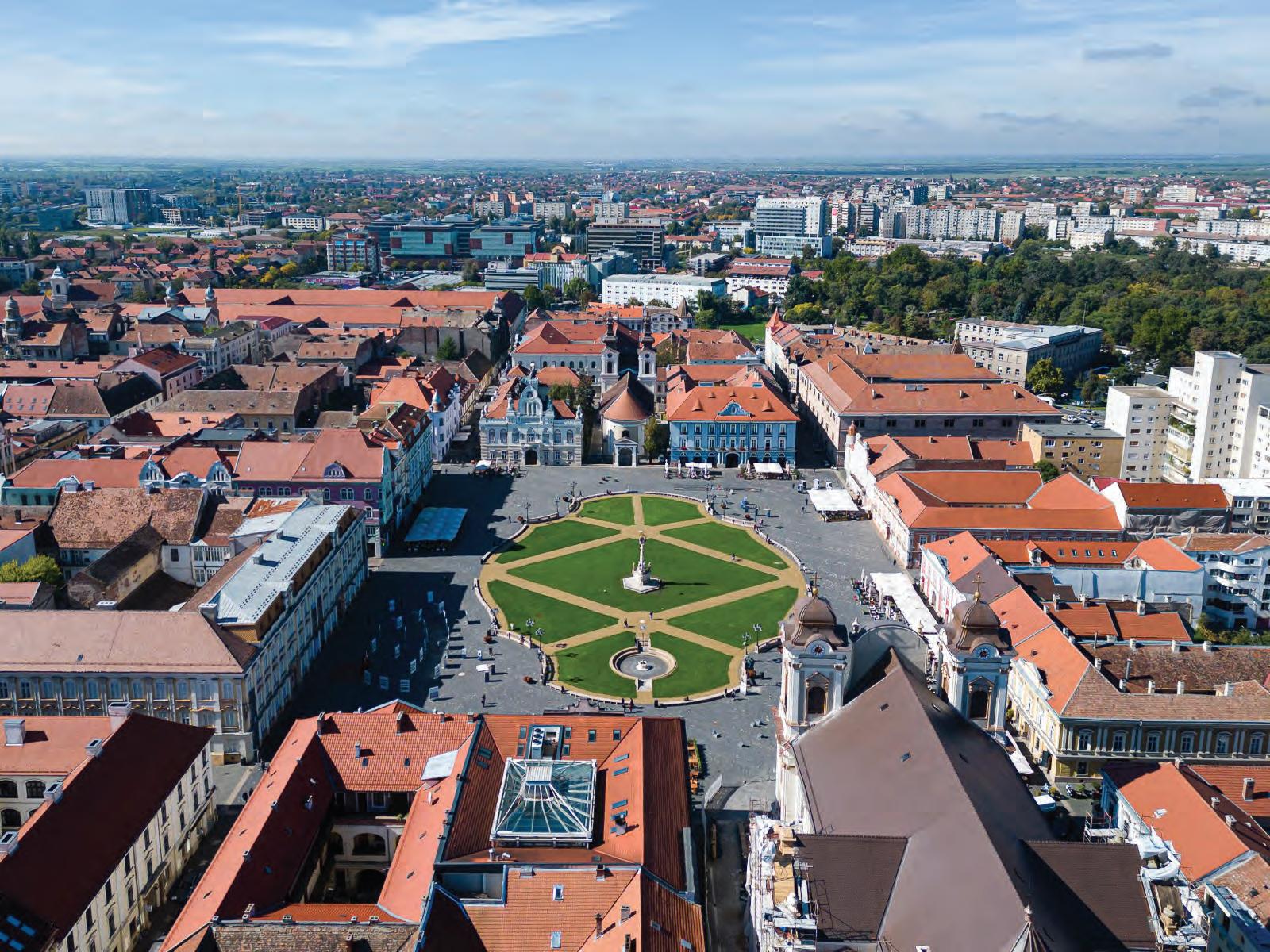

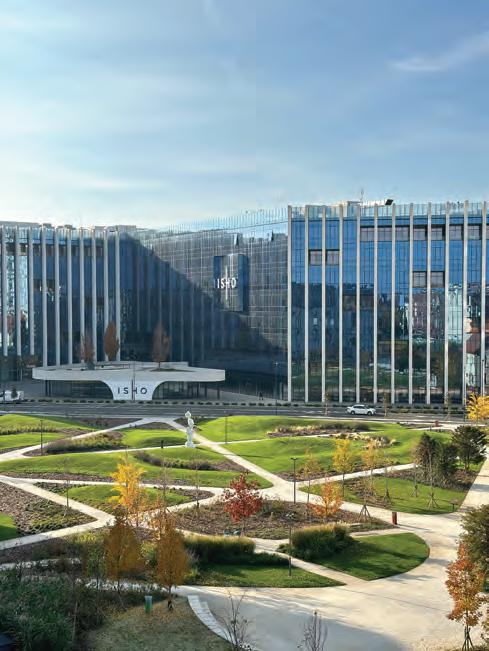

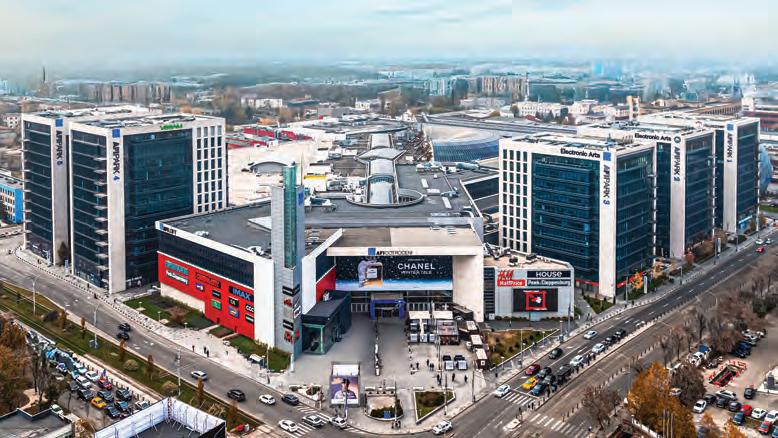



SWISS Life Asset Managers (SLAM) will remain focused on delivering attractive returns by “building high-quality portfolios in the living, logistics, light
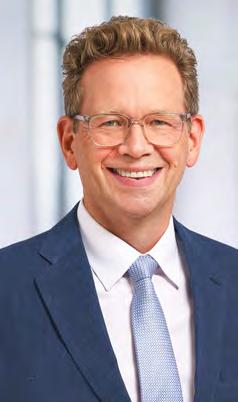
industrial, life sciences and technology sectors”, according to Per Erikson, head of real estate. “Hospitality is a significant part of the living segment and has been one of the strongest performers in terms of transaction volume growth in 2024,” he said. “We expect this trend to continue. Additionally, we’ve observed growing investor interest not only in traditional tourist hotspots but also in regions that combine business and leisure opportunities.”
A pro-social approach is also important. “Since most people spend most of their lives in buildings, health and wellbeing are crucial considerations in real estate,” he added. “To address this, Swiss Life Asset Managers prioritises sustainable construction standards, targeted certifications and thoughtful design to enhance user experiences while meeting ESG objectives.
“While health, wellbeing and social
TIMISOARA authorities are focusing on making the city more attractive.
“For the last 300 years, Timișoara has been one of the best-planned cities in this part of Europe,” according to Timișoara’s mayor, Dominic Fritz.
“Designed by Austrian planners after the city was conquered in 1716, Timișoara still amazes with its clear development vision and soundly integrated urban layers,”
Timișoara has firmly established itself as a cornerstone of Romania’s real estate and business-development landscape, at the crossroads of Central and Southeastern Europe. Landmark projects have set new standards in urban regeneration and Class A office development, attracting multinational corporations, tech startups and creative industries alike.
“Companies choosing Timișoara tell
me they’ve picked the city because we have highly skilled employees, fluent in foreign languages and incredibly motivated. Timișoara’s diversity isn’t just a point of pride — it’s a driver of prosperity,” Fritz added. Improving the quality of life in Timișoara and making the city more
inclusion are key priorities for occupants, one of the biggest challenges is the severe shortage of housing in many European countries. This challenge is central to our strategy with our primary focus on creating additional supply, including quality affordable housing that meets municipal requirements and aligns with our investor’s growing emphasis on affordability.”
For logistics and light industrial, the firm focuses on strategic locations near urban centres and major trade corridors for big-box solutions. “The attractiveness of this asset class is the strong demand for modern logistics spaces driven by factors such as e-commerce, food, trade, nearshoring, friendly shoring, and even new industries such as battery storage and recycling. The logistics market is heading strongly forward to pre-pandemic demand for modern logistics space,” he said.

attractive are top priorities. The city has transitioned from one-off projects to strategic initiatives, investing heavily in the digitalisation of administration, public transportation, education and healthcare. Fritz added that the city is “a magnet for talent” and “also attracts top companies and highly qualified professionals. That’s why, as an administration, we’re steadily improving the quality of life in Timișoara, investing in the city and celebrating when private companies do the same.”
Timișoara, in western Romania

SEVERAL associations and development agencies will unite in Cannes under the Canadian banner. The Canadian Real Estate Association (CREA) returns to MIPIM, joined by the Manitoba Real Estate Association (MREA) and The Nova Scotia Association of Realtors (NSAR). Also, four economic development agencies will complete Team Canada: Economic Development Winnipeg and Rural Manitoba Economic Development Corporation from Manitoba, as well as Halifax Partnership and Cape Breton Partnership from Nova Scotia.
Representatives from these organisations will be at MIPIM to build connections, promote Canada and showcase their projects to a leading investor audience.
This year Canada’s projects and investment opportunities will be featured on a 3D interactive platform powered by PureBlink, a Canadian creative agency. Attendees will be encouraged to stop by to view projects, engage in conversations with economic development partners and learn about life in Canada, exploring the country’s affordability and quality of life.


BBF, A LEADING developer of world-class residential and commercial properties in Cyprus and Greece, has unveiled two new landmark projects, dubbed Land of Tomorrow (LoT) and KEAN. “These transformative initiatives are underpinned by principles of sustainability and innovation, aimed at elevating Cyprus’s international profile while revitalising the cities of Larnaka and Limassol,” said Vadim Romanov, CEO and founding partner of BBF.
LoT, a groundbreaking development for both Cyprus and the Mediterranean region, spans over 300,000 sq m along a 2.5 km coastline. “This project transforms a former industrial area into a dynamic, sustainable community,” Romanov said. “With advanced infrastructure, vibrant public spaces and ecologically enhanced beachfronts, LoT sets a new benchmark for mixed-use developments, fostering eco-conscious living and unlocking substantial oppor-

tunities for tourism, business and cultural integration.”
KEAN, meanwhile, reimagines an iconic location in Limassol, combining luxury residential living, modern commercial facilities and expansive green zones. “This project underscores the importance of sustainable building practices and innovative design in creating thriving, inclusive urban hubs,” he added. Beyond these flagship projects, BBF has an impressive portfolio that includes over 150 completed residential and commercial developments across Cyprus, Greece and beyond. These include high-end residences, mixed-use complexes and iconic urban landmarks, each reflecting the company’s dedication to quality, innovation and sustainability.
Romanov said: “Cyprus is becoming increasingly attractive for business relocation, fostering significant growth in the IT and financial sectors, attracting substantial foreign investments and strengthening its position as a leading tourist destination. This progress has been reinforced by Cyprus recently achieving an A investment grade, as evaluated by leading financial institutions, reflecting the country’s economic stability and appeal to global investors.”
THE HOWDEN Beach Club, in association with Padel Social Club, is back at MIPIM 2025 for the third year running, offering real estate networking while bringing out the competitive spirit in delegates, according to the organisers.
“Our Howden Beach Club adds leisure into networking at MIPIM,” said Jamie Thomson, real estate industry lead for Howden, the global retail, specialty and reinsurance broker. “Participating in a sport like padel is the best way to break down barriers and get to know people. It can also get really dynamic — players find themselves across the net from those they meet at the deal table,” he added.
This year will see premium beverage brands The Lost Explorer and Mirabeau both sponsoring Howden’s event.
Thomson said that participants can expect a padel & paloma reception after the main competition on Wednesday, March 12, as well as many other chances to pause and enjoy the experience.
“The tournament will involve 32 teams, all from private equity real es-
tate,” he added. “They will play against each other until a winner is crowned on Wednesday.” The Howden Beach Club will also be active throughout the week with other events and contests ensuring that the court is used for the entirety of MIPIM.


Morph’s plans for
THE YEAR 2025 is likely to be another incredible year for Spanish architects Morph, going by 2024’s achievements.
“Last year, we completed two singular projects in the centre of Madrid, including an organic residential tower called Becrux, and the renewal of hotel Príncipe Pío,” said César Frías Enciso, studio founder. “We also delivered the renewal of Malaga Stadium and a zero-carbon footprint Research Centre for the Spanish Army in Jaén. Outside Spain, we are developing projects in Portugal, Andorra, the Dominican Republic and Saudi Arabia, and have the prospect of starting schemes in Panamá, Mexico and Canada.” These projects will include branded luxury residences and residential towers, as well as museums, masterplans and more. Morph, founded a decade ago, has featured in the WA100 list of the 100 biggest architectural studios in the world for five out of those 10 years.

Former President of the European Central Bank and Italian Prime Minister, Dr. Mario Draghi will open MIPIM 2025. Author of the report on “The Future of European Competitiveness”, he will shed light on Europe’s economic transformation plans in a rapidly changing geopolitical climate.
Considered one of the greatest economic leaders of our time, Dr. Draghi continues to inspire with his insightful analysis of the global economy. As President of the European Central Bank (2011–2019), he was celebrated for his pivotal role in saving the Eurozone, notably through bold monetary policies that led to the creation of 13 million jobs.
Dr. Draghi also established himself as a key figure in European politics as the Prime Minister of Italy (2021–2022).
Join us on Tuesday 11 March at 15:00 in the Grand Auditorium
AROUND €115bn will be invested in real estate and infrastructure projects across the Stockholm region by 2040, according to Stockholm’s investment agency. Staffan Ingvarsson, CEO Stockholm Business Region, praised the city’s “dynamic landscape” and “the canvas of our urban future”, adding: “With an estimated 30-40,000 construction workers needed, pre-
dominantly in manual labour trades, we are not merely building structures but fostering livelihoods, shaping communities and nurturing the essence of our city’s growth.”
The largest investment share is expected to be in housing, with an investment volume of €59bn, followed by infrastructure investments in railway, subway and light rail, with an invest-

ment volume of €18bn.
While construction projects are being planned throughout the whole region, there is a concentration of projects in central Stockholm. For example, Stockholm Wood City, which will rise in Sickla, in the Nacka Municipality, is expected to offer a vibrant urban environment with a mix of workplaces, housing, restaurants and shops. Stockholmshusen, meanwhile, is one of Stockholm city’s largest development projects with the goal of building thousands of new rental apartments.
Approximately 3,300 new tenancies are to be created, divided into 25 different projects. The homes will incorporate smart solutions such as green roofs or photovoltaic roofing.
“The Stockholm region is leading the way in building sustainable societies through groundbreaking innovation and strong collaborations. Our presence at MIPIM is an opportunity to showcase solutions that can inspire the world — from the world’s largest wooden city project to fossil-free marine transport and climate-smart concrete. We want to invite actors from all over the world to Stockholm, to co-create the future together with us,” Ingvarsson said.
LATVIA’s capital city, Riga, has been impressing international investors with its commitment to sustainability, innovation and functionality. A slate of recently completed and pipeline projects underlines its ambitions, including the transformative New Hanza district. Next to Riga’s historical centre and Skanste, a modern Riga neighbourhood, the new urban district of New Hanza is rising on the site of one of Riga’s most important transport, logistics and business hubs.
On nearly 25 hectares of land, a network of streets with underground utility lines has already been built, while an old cargo railway station has been transformed into the Hanzas Perons, а multifunctional cultural venue. The first of many New Hanza A-class office buildings are now rising in the area.
According to the Riga Investment and Tourism Agency, Live Riga, the city and its metropolitan area is the largest economic, financial and cultural centre in Latvia and the Baltic region, attracting up to 90% of all investment in Latvia.
As an office destination, it is a re-
gional leader. Riga enjoys the highest prime yields among the Baltic capitals, exceeding the European average at 4.9%. Riga also continues to experience strong demand for high-quality, certified industrial premises, driving growth in sustainable and energy-efficient properties.
Riga is on the road to sustainability and innovation


THE MAYOR of Rome, Roberto Gualtieri, will be leading the city’s delegation at MIPIM again this year to present the investment and development opportunities of a city in transformation. “We have recently completed some important works, such as those relating to the 2025 Jubilee,” Gualtieri said. “Record numbers of visitors are in evidence, and high-quality projects continue to arrive.” He added: “Rome’s regeneration doesn’t only concern urban and architectural aspects, but also social and environmental ones, thanks to an unprecedented amount of public and private commitments.” He said that the city would welcome international investors keen to get involved, with a focus on “projects that allow us to regenerate new areas and buildings in the city, help us enhance public assets, promote housing supply and establish or strengthen non-residential activities in the hospitality, training, management and commercial sectors.”



MAKING cities sustainable is “a complex challenge, which requires partnerships to solve it”, according to Jakob Norman-Hansen, director, global networks & partnerships, Bloxhub.
Danish initiative Bloxhub is a hub for sustainable urbanisation, which has been seeking to tackle the challenge head on by creating an ecosystem of companies, organisations, research institutions and public bodies focused on the task of making cities better. Bloxhub has around 350 member companies all working within architecture, design, construction, tech or other fields related to sustainable urbanisation.
“We live in a 9,000 sq m co-working space in two neighbouring buildings in the heart of Copenhagen,” Norman-Hansen said. “As a member, you can have your office here, or visit for activities and use community space.”
While many members are based in the Nordics, Bloxhub has also been pursuing international collaboration, working with stakeholders and experts across Europe, Asia and the US to create best-
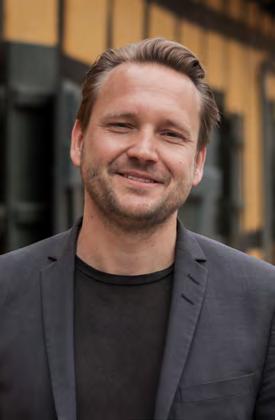
use cases for the wider construction and development industry. “One key topic is the circular economy in real estate, which has been under discussion for a long time,” he added. “A universal framework isn’t there yet, so we need to talk to construction and materials firms, as well as architects and developers.”
Bloxhub also collaborates with global organisation, the Urban Land Institute (ULI), to address topics including social equity in housing and real estate’s transformation agenda. “Many cities are now implementing regulations about when you can build something new and when you should pursue renovation or the refurbishment of existing assets,” he said.
He added: “We’ll be attending MIPIM to inspire new solutions and fresh ways of thinking about business models within real estate.”
THE CITY of Ostrava in the Czech Republic is being transformed through the work of world-renowned architects.
At MIPIM the city will showcase its latest stand-out projects, as well as presenting new opportunities for investors and developers.
With a reputation for integrating modern architecture with historic buildings, Ostrava has attracted widespread attention in recent years. One notable scheme is private residential complex Nové Lauby, located in the heart of the historic city centre; most of the apartments have already found buyers. Meanwhile, Ostrava’s tallest building, built in the 1960s on Ostrčilova Street, is set to undergo a major revamp following designs by Czech architect Eva Jiřičná.
Another architectural gem is the new concert hall, which will be paired with the reconstruction of the existing City of Ostrava Cultural Centre. Work
commenced in July on the concert hall’s striking design, created by American architect Steven Holl.
This spring, reconstruction work was completed at the Grossmann Villa, built in the 1920s by the Ostrava architect and building contractor František
Grossmann as his family home. The modern Organica office complex opened recently, also at Nová Karolina.
A further striking success in Ostrava has been the transformation of its slaughterhouse complex, recently converted into a contemporary art gallery.
An architectural competition is under way for the city’s new football stadium


GLOBAL alternative asset manager GLP Capital Partners (GCP) has acquired three logistics properties in Germany from Segro European Logistics Partnership (SELP).
The portfolio comprises properties in Neuenstadt, Grevenbroich-Kapellen and Malsfeld with a combined rental space of 129,000 sq m, all of which are fully let.
The logistics property in Neuenstadt am Kocher on Wilhelm-Maybach-Strasse 2-10 was built in 2009 and comprises seven units offering 73,400 sq m of space. The 35,000 sq m property in Malsfeld was built in 2006 and expanded in 2020. The 20,400 sq m asset in Grevenbroich-Kapellen comprises three units, built in 2005 and 2007. Jim Hartley, managing director Germany & Netherlands at Segro, said: “This transaction is another great example of our capital recycling programme. SELP will reinvest these proceeds into higher value-add activities such as our attractive development pipeline.”
Tuesday 11 March 2025
19.00 to 22.00

Kick off MIPIM 2025 in style!
Join the revamped Opening Night, inside the venue for the very first time.
Network with 2,000+ real estate professionals at the biggest official event of MIPIM.
Open to all registered participants.
ACCORDING to Itsuhiro Miura, the deputy director general, city and housing bureau, of Japan’s Ministry of Land, Infrastructure, Transport and Tourism (MLIT), the theme of the Japan booth at this year’s MIPIM will be ‘Sustainable Urban Development in Japan’.
Miura said the ministry plans to share the initiatives of the Japanese government and exhibiting companies on topics including sustainability and resilience, affordable housing and inclusion, digital solutions and innovation, and Japan’s appeal as a place to invest. International urban and housing policy co-ordination will be a priority for the MLIT, and so Miura wants to discuss related matters with as many countries as possible. “Housing affordability has become a major issue worldwide,” he added. “So we definitely want to talk to countries like the UK, which has set a policy of supplying 1.5 million hous-
ing units in five years.”
Miura also wants to deepen Japan’s partnerships in Asia regarding urban policy and development. “In Asian countries, the problem of traffic congestion is becoming more serious, and

we would like to exchange views on the know-how and benefits of urban development from the standpoint of public transportation, namely Transit Oriented Development (TOD), an area that Japan is very strong in.”
In terms of the convention’s theme of cities and urban development, MLIT will promote its knowledge in fields that can help others, such as earthquake resistance and coping with typhoons. He added: “As far as housing supply goes, we will talk about manufactured housing technologies and introduce Japanese companies that have been at the vanguard of these technologies. In terms of digital technology, we have developed a 3D urban model project called PLATEAU that is beginning to be recognised overseas.”
Invest in Japan Geo Focus Stage Wednesday, March 12 11:00 - 12:00
POSITIVE signs abound this year for Panattoni, the world’s largest privately owned industrial developer, according to Robert Dobrzycki, CEO & co-owner Panattoni Europe, UK, India & Middle East.
“In 2025 our focus is on expanding into underrepresented areas, particularly in Western Europe and Asia,” Dobrzycki said. “We aim to deepen our presence in less-covered regions of Europe and further penetrate Asian markets. For instance, we have recently entered Saudi Arabia and are considering the UAE, while continuing to grow in India and push further east.”
He added: “Our approach is strategic: wherever we expand, we aim to establish a significant and impact-
ful presence rather than spreading ourselves thin.” This means building a robust platform that delivers substantial space, supports clients and investors globally, and leverages deep local expertise, Dobrzycki added. “Additionally, 2025 is a milestone year for Poland and for us at Panattoni in Europe. We’re starting the year with the Polish presidency of the EU Council — an opportunity to drive forward key initiatives for economic security and sustainable growth. This year also mark’s Panattoni’s 20th anniversary in Europe. Starting in Warsaw in 2005, we’ve expanded into 18 European countries and continue to grow beyond the continent with a portfolio of 24 million sq m of space.”
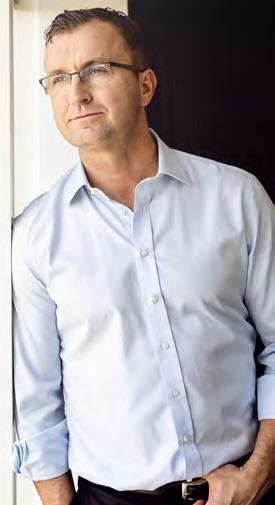
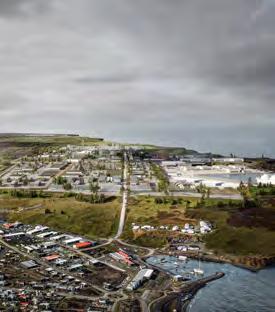
ICELAND’s trade agency will be flanked by a raft of exciting projects and investment opportunities at this year’s MIPIM. Development company Kadeco, which oversees land owned by the Icelandic state in the vicinity of KEF Airport, will be sharing its K64 masterplan for the airport area. This plan outlines the area’s development potential over the next 25 years, highlighting the unique qualities of the location. The international airport, situated in the North Atlantic, enjoys access to cargo and a large ship harbour, as well as a vibrant local community, all situated just a 40-minute drive from the capital area. The plan has five focus areas: three industrial sites, one commercial and one residential plot. One of the industrial developments, dubbed Helguvík and Bergvík, is a circular industrial park prioritising sustainability.

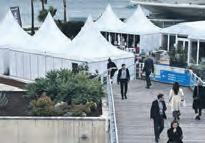











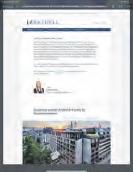













2025 PROMISES to be a big year for Osaka, the largest city in the heart of western Japan’s thriving Kansai region. In 2016, Osaka hosted MIPIM Japan, declaring its intention to become an international metropolis, and this year progress towards that goal will be confirmed with Expo 2025 Osaka, Kansai, which opens in April and will run until the third quarter.
But Osaka’s ambitions don’t end with the Expo. “Last September, Grand Green Osaka opened in front of JR Osaka Station,” said Osaka deputy mayor Toru Takahashi. “To realise the city development policy of being a hub that combines greenery and innovation, Umekita Park, which is

one of the largest in the world at 4.5 hectares, was integrated with the railway terminal to create a beautiful natural landscape in the heart of the city.” He added: “Osaka’s public and private sectors are working together to create new attractions and strengthen its international competitiveness.”
These ideals extend to the Expo, which is being held under the theme ‘Designing a Future Society for Our Lives’. Approximately 160 countries and regions from around the world are expected to participate.
Yumeshima, the site of the Expo, is an artificial island located on the waterfront, and the planned site of Japan’s first integrated resort (IR), scheduled to open in 2030. The
Expo site next to the IR is called Yumeshima Second Phase Area and covers an area of 50 hectares. A master plan for development is currently being drawn up, and a public call for developers is scheduled for the second half of 2025.
Other large-scale urban projects planned for Osaka include the redevelopment of the area east of Osaka Castle, Osaka’s most famous tourist spot; the “people-centred” spatial development along Midosuji, Osaka’s main north-south street; and the plaza in front of Namba Station, another major thoroughfare. All of these projects will be announced at the Japan Pavilion at MIPIM. “I believe that Osaka will become a city of choice for foreign companies and foreign talent,” Takahashi said. “We hope that by participating in MIPIM more people will become aware of Osaka’s potential and business opportunities.”

IF DAIWA House Industry pioneered the use of prefabrication technology several decades ago to become one of Japan’s biggest house builders, it has since expanded into related fields, including logistics and commercial facilities, while adopting a trailblazing environmental stance using carbon-neutral building methods.
Head of the overseas division, Hirotsugu Otomo, told MIPIM News that Daiwa House’s initial move overseas was earlier than that of most Japanese companies, having built more than 10,000 homes in the US in the 1970s and 1980s, before expanding across the country via mergers and acquisitions. Today, Daiwa House works with partners in the US on logistics and hotel development
and is also expanding its business in Australia and the EU. “We are currently moving forward on a project in London,” Otomo added.
In the coming years, overseas business will account for an ever-increasing portion of the company’s income, with the firm aiming for more than ¥1trn in overseas net income for fiscal year 2026.
“As you know, Japan’s population is decreasing,” Otomo said.
“So we are looking overseas for growth possibilities. Nevertheless, Japan is still a priority. Japan is working together with the public and private sectors to achieve carbon neutrality, and, as a leading company, achieving carbon neutrality through construction is one of our top priorities,” Otomo said, adding: “Since Japan is
susceptible to weather and geological disasters, resilience is also an important consideration, and it is essential to create disaster-resilient cities and buildings.”
Following the devastating Lahaina fire on the island of Maui in Hawaii in 2023, the company provided 50 temporary housing units for displaced residents. In Europe, Daiwa House has been providing a number of modular housing types, including 1,800 housing units for refugees.
These “social impact” activities are one of the main points that Daiwa House is stressing for its 70th anniversary this year, whilst endeavouring to expand its European business. “Not just by producing temporary housing,” Otomo added, “but new technologies that tackle energy efficiency.”
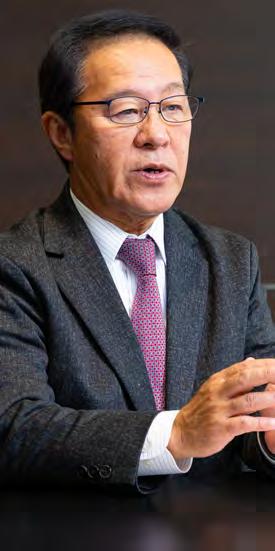



Improved collaboration between local authorities and private real estate will be crucial to making cities better for all
Collaboration between the private and public sector is one of the chief challenges facing the real estate industry. However, the successful resolution of this challenge could be key to unlocking better cities and outcomes for all, according to experts in the sector. Neil Slater, CEO of Redevco, says: “Wherever we embark on city projects, be that in Paris, Hamburg, London or Amsterdam, collaboration with local authorities is crucial for getting the project off the ground. But even more important is a partnership which leans towards the achievement
of social goals, that defines how the asset will contribute to the city.” Slater says that developers and investors should never lose sight of an asset’s complete lifecycle, which involves the opportunity to make a positive difference both in social and environmental terms over the long term. He also asks that authorities “recognise that real estate investors are here to make a difference. The quality of the collaboration is important to achieve shared goals”. Slater says that a more holistic approach reflects Redevco’s wider mission, “to enrich communities and make them flourish”. He says: “This not only requires us to massively

reduce operational and embodied emissions within our assets, as we are working towards net zero carbon by 2040, but to also evaluate the social impact of everything we do.” The firm’s latest project in Paris, 126 Rivoli, marries together significant environmental and societal ambitions. Once redeveloped, the Haussmann building will offer eight levels of retail, offices, urban logistics, a lifestyle hotel and a restaurant, with both the construction and operational phases having won BREEAM Excellent certification. He adds: “The last year has been quite transformative in terms of the deals we have completed. We are probably
an example of a company that is very business minded but believes that transformative real estate is possible in our industry and in partnership with cities.”
Social and affordable housing
Global real assets investment manager Patrizia has been working with local authorities on the provision of social and affordable housing via its Patrizia Sustainable Communities initiative, which is targeting the creation of a €500m pan-European social and affordable housing portfolio.
Marleen Bekkers, Patrizia Sustainable Communities fund manager, says that social and environmental goals are as important as investor returns for the strategy. “We have a dual return purpose. Financially, our target return for our investors is 12%, while we have seven social and environmental KPIs. We scrutinise every opportunity, and won’t invest unless all criteria are met,” she says. The platform launched with two social housing schemes in Dublin, both shaped through public consultation. “We received hundreds of responses from local residents to our questionnaires which enabled us to quantify their needs and improve the overall result,” she says. These questionnaires as well as local authority input resulted in the addition of a 1,500 sq m library to the final development, featuring educational and community spaces. Patrizia also saw fit to create its own social-value framework to make sure that the schemes were meeting its goals. Further projects have seen the creation of social and affordable housing in the UK, Spain and Belgium. With the fund now close to being fully committed and having already exited projects in Ireland and recycled that capital, the team is exploring how it might further develop this strategic initiative within Patrizia.
Mahdi Mokrane, Patrizia head of investment strategy & research, co-head fund management and head of fund management real estate, adds: “Patrizia has been successfully investing in residential real estate for all of its 40 years and the expanding living sector will continue to play a large role in the company’s future.”
General (L&G) has long sought to build a bridge between private capital and the needs of urban communities.
Last year, L&G secured funding for its third build-to-rent (BTR) scheme in Leeds, which is being developed by Glenbrook with a target completion of April 2026. The £140m funding is enabling the duo to deliver 500 new apartments, alongside resident facilities such as a concierge, lobby, gym, podium gardens and terraces. The project includes ground floor retail and 60 parking spaces.
As the development forms part of the wider masterplan for Whitehall Riverside, the scheme involves collaboration with local authorities on the creation of a new mixed-use riverside destination. The development’s location has been carefully considered to ensure that residents benefit from the diverse and growing employment opportunities, as well as its cultural destinations, local amenities
and strong transport links, including Leeds Central station, which is within a five-minute walk.
Adam Burney, head of annuity BTR at Legal & General Investment Management Real Assets, says: “The Whitehall Riverside development has been designed with a focus on lifestyle and resident satisfaction, aiming to ensure quality, operational efficiency and long-term environmental sustainability that meet the needs and aspirations of residents.
“As a major investor in UK real estate, we remain committed to levelling up the UK by ensuring communities across the country have adequate access to employment, infrastructure and housing, seeking to make policy objectives a reality.”
UK financial services group Legal &
Andrew Kail, CEO of Legal & General Retirement Institutional adds: “By investing in the growth of residential areas, such as the Whitehall Riverside development in Leeds, we are supporting a truly vibrant city that hosts key economic and employment sectors such as healthcare, life sciences, digital technologies, advanced manufacturing, as well as financial and professional services. This investment has a powerful intergenerational aspect — an example of how we are using pension savings to create productive assets for future generations.”
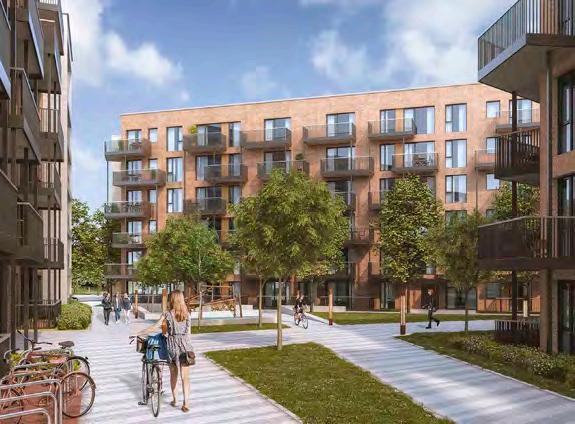
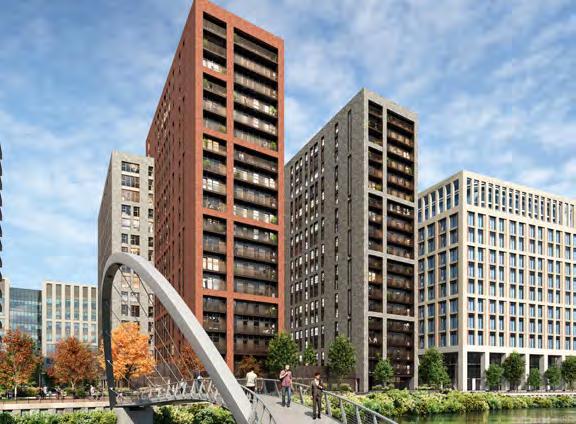
Other schemes in which L&G has invested in society include its provision of financing for Anchor, the UK’s largest provider of housing and care for older adults. A series of funding rounds, dating back to 2014, are assisting Anchor with its vision of building at least 500 affordable, energy-efficient homes per year over the next decade.
Steven Bolton, head of corporate private credit, Europe, L&G Asset Management, says: “We believe institutional investment can play an important role in helping to address societal challenges, and organisations like Anchor provide an enormous contribution in terms of social value. In the UK, we urgently need to drive up the delivery of all types of homes, across all tenures. As well as a housing shortage, affordability proves challenging, so funding the delivery of energy-efficient and affordable homes is ever more important.”


Real estate is teaming up with other industries to explore the latest solutions for reducing carbon emissions, backed by government drives
If macroeconomic headwinds and geopolitical differences have been placing pressure on the real estate industry’s environmental goals, the topic is still expected to maintain primacy in strategy calls this year, experts predict.
“No aspect of ESG is slowing down in the European market,” says Robbie Epsom, head of EMEA sustainability, CBRE Investment Management.
“Net zero is almost business as usual — pathways have been integrated into our investment processes. Over the coming year, we’ll be looking at how we can make that even more efficient.”
Evolving legislation is likely to provide
the “carrot and stick” for many property owners as they consider their ESG responsibilities at the start of 2025, according to Ludovic Chambe, CBRE’s head of ESG and sustainability solutions for Continental Europe.
“The challenges are different for all, but many clients are having difficulties navigating the complex legislative environment,” he says. “Since 2021, we have been moving from voluntary to mandatory reporting and tracking when it comes to building performance and emissions. During Cop21, we saw the launch of public commitments from various countries — there’s now a drive to move from
Feldberg Capital’s transformational strategies include London village within a street, Lonsdale Road
commitments to concrete action.”
As far as property owners go, Chambe says that most are currently drilling down into capex requirements to get their portfolios up to scratch. “They want to understand the levels of investment required now, as well as build sustainability into their business plans going forward,” he says. “The return on investment is key, and expectations around this are in flux.”
Public sector role
Gjermund Grimsby, chief advisor for climate change at KLP, Norway’s largest pension fund, suggests that “huge” action from governments

worldwide is now mandatory to drive long-lasting change across business and industry. “The only way we can stop fossil-fuel investments is to make renewable energy really cheap,” he says.
KLP’s investments in this area have been widespread to date. Two years ago, the pension provider teamed up with the Norwegian government to fund a major solar power plant project in India, while last year, KLP committed to an investment fund focused on solar and energy storage assets located in OECD countries.
The European Commission is mobilising with new guidelines and rules to support the industry. For example, areas such as the EU’s Corporate Sustainability Reporting Directive (CSRD) are expected to reach a more formalised stage this year. Companies in the EU had been obliged to consider the new reporting rules for the first time in the 2024 financial year in preparation for reports published in 2025, which should disclose information on what large companies see as the risks and opportunities arising from social and environmental issues, and the impact of their activities on people and the environment.
Another growing area of interest is climate risk, with landlords not only wanting to understand the degree of risk, but also the right actions to mitigate that exposure. Contrary to popular belief, there are lots of things building owners can do to defend against freak weather incidents, Chambe says. “We can implement measures like elevating buildings, reinforce foundations, install flood barriers, or move technical equipment from the basement to the roof, Landlords and occupiers are now seeking to include such aspects in their ongoing business plans. After the recent floods in Valencia, a lot of our clients came back to us to discuss how they could future-proof their portfolios.”
Jon Cochrane, head of asset management at real estate investment manager Feldberg Capital, says that its
workplace-focused strategies have been helping to reassure occupiers about the climate-change question. Cora, Feldberg’s recently launched £500m (€603m) brown-to-green workplace impact fund, is targeting offices ripe for redevelopment in locations such as Soho, Marylebone and Fitzrovia. Focusing on energy-inefficient ‘brown’ offices, Feldberg is using its ESG framework to transform older office assets into modern energy-efficient green workplaces.
“With Cora, we are seeing occupiers engage with the impact strategy much more than they might have done in the past,” Cochrane says. They want to see a “net-zero trajectory for decarbonisation, and evidence of the resilience of the asset in the face of freak weather events, for reasons of business continuity”, he says. “IT and comms teams will come along to inspect assets and ask a lot more questions about whether buildings are equipped to handle overheating, flood risks or power outages.”
Materials matter
In the midst of the race to decarbonise and improve asset resilience, building materials are increasingly coming under the lens. One frontrunner on the road to carbon neutrality and circular economy in this area is Heidelberg Materials. The global firm, which prides itself on innovation and creativity, has been working on intelligent and sustainable building materials as well as solutions for the future.
As part of its goal to accelerate growth and circularity in the US, the business acquired Giant Cement Holding in November of last year. The acquisition includes one cement plant, two deep-water import terminals, five distribution terminals, and an alternative fuel-recycling business.
“Our latest additions are yet another great strategic fit creating value in the near term through significant synergies with our existingassets on the East Coast,” says Dr Dominik von Achten, chairman of the managing board of Heidelberg Materials. “At the same time, we are excited about taking further steps

in building a sustainable future and positioning Heidelberg Materials as the front runner on the path to net zero and a circular economy in the key North American market.”

Pan-European steel and mining company ArcelorMittal is seeking to create smarter steels for people and the planet. In addition to a 2050 net-zero target, the company has recently set a global target of reducing its CO2 emissions intensity by 25% by 2030, while in Europe the target is of a 35% reduction by 2030. Its pioneering Torero plant in Gent, Belgium is the first of its kind in the European steel industry, using self-produced bio-coal for its blast furnace. Under its umbrella brand, XCarb, the firm is grouping together all of the reduced, low and zero-carbon steelmaking activity of ArcelorMittal, as well as wider initiatives and green innovation projects to help demonstrate progress and boost transparency.

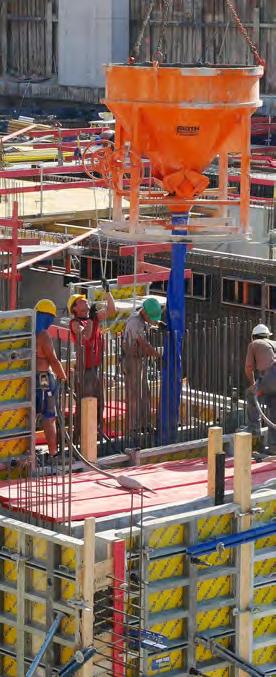
ROAD TO ZERO STAGE
WHERE ARE WE ON THE ROAD TO ZERO?: TUESDAY, MARCH 11 14.00 - 15.00
PLAN YOUR TRANSITION TO ZERO CARBON: TUESDAY, MARCH 11 16.00 - 17.00
SURVIVING EU TAXONOMY: WEDNESDAY, MARCH 12 10.00 - 11.00
TRANSITION KPIS UNPACKED: WEDNESDAY, MARCH 12 11.30 - 12.30
FROM BROWN TO GREEN: WEDNESDAY, MARCH 12 14.00 - 15.00
ASSESSING AND ADDRESSING PHYSICAL CLIMATE RISK: THURSDAY, MARCH 13 10.00 - 11.00

Dealmaking should accelerate in 2025, as experts predict a cycle reset for real estate’s capital markets
Real estate investing in 2025 will be anything but dull, with global politics, macroeconomic movements and capital flows all shaping the dealmaking environment, according to sector experts. Victor Stoltenburg, global head of acquisitions and sales at Deka Immobilien, suggests that “2025 will be an interesting year”, noting that Donald Trump’s return to The White House will come under plenty of scrutiny. In Europe, he suggests that interest-rate cuts by the European Central Bank (ECB) will not be as numerous as once thought. A key alternative to real estate, the German bond market, may put pressure on capital raising for certain parts of the industry, he adds. “There are concerns that the German 10-year bond yield will stabilise somewhere above 2%, which is an important benchmark for us,” he says. Capital raising for core real estate,
which has been sluggish over the last two years, may be slow to improve, meaning core deals will continue to lag opportunistic ones at the deals table. “While there is good liquidity for value-add strategies, with opportunistic funds able to target double-digit investments, core money takes longer to return. While we are seeing signs of the core market coming back all over Europe, core investors are more cautious on principle,” he says.
In the light of this, Stoltenburg suggests that Deka Immobilien’s acquisition strategy will remain “opportunity based”. Globally, Deka’s funds have continued to find interesting deals across the core asset classes of offices, retail, logistics and hotels in recent years. In the US and Asia, the focus has often been on offices, and Stoltenburg notes that this “counter-cyclical” approach is likely to continue.

“On the face of it US offices are very weak at the moment, but we consider the asset class something of a ‘hidden champion’,” he says. “I was in New York at the end of 2024, touring the Manhattan market, and was surprised by how quickly recovery is happening there. In Asia, offices are still the easiest part of the market for us to understand, although logistics there, as elsewhere, has an enduring appeal for us.”
In Europe, Deka’s investments are well diversified. “Although offices represent 65% of our portfolio, we have always invested in hotels and logistics, as well as retail,” he says. “We have more than 80 hotels across Europe. Retail has been slower over the past decade, but it is currently coming back, on a different yield basis.”
Cushman & Wakefield’s recent Investment Atlas reveals that 84% of European prime office, retail and logistics
markets are currently undervalued, 16% are fairly priced, while none are fully priced.
The UK and Germany emerge as the most compelling destinations, with a high concentration of underpriced markets. Germany boasts all 17 prime markets classified as underpriced, while the UK showcases 24 out of 27 markets in the same category.
The report highlights the logistics sector as particularly promising, with 95% of its markets considered undervalued. Notably, the retail sector has experienced a remarkable turnaround, witnessing a 24-percentage point increase in underpriced markets over the past two quarters. This positive shift, coupled with improving consumer sentiment, positions retail for potential growth.
Historically, real estate cycles have demonstrated a consistent pattern, taking an average of 6.7 years for markets to transition from undervalued to overvalued. This cycle suggests that European markets are poised for a period of growth and value appreciation.
Sukhdeep Dhillon, head of EMEA Forecasting at Cushman & Wakefield, says: “Underpriced markets are attractive targets for real estate investments, with opportunities for capital appreciation as the market adjusts towards fair value. There have been notable improvements across most markets, facilitated by stable total returns forecasts, a reduction in bond yields, and an improvement in the risk premium.
“Germany has experienced significant repricing, but yields have largely stabilised across the board. Despite current economic challenges, there is a cautious optimism for the German real estate market, and momentum is expected to improve.”
David Hutchings, head of EMEA investment strategy at Cushman & Wakefield, adds: “The market is turning and investors must reset their strategies. Multiple opportunities in commercial real estate across various risk profiles are emerging, balancing income security with operational gains.
“Geopolitical risks mean that the recovery will be uneven, but some of the best purchases may be in the year ahead. While prime values bottomed out in Q2, secondary stock remains threatened and legacy assets remain at risk of stranding. Repositioning and
repurposing such assets is a major area of opportunity, but for all assets, defining their ‘reason to be’ is key.”
Brian Klinksiek, global head of research and strategy at LaSalle, adds a big-picture view. “Global real estate sentiment is gradually improving following a long period of negativity and signs are pointing to the beginning of a new real estate cycle,” he suggests.
“History has shown that investing early in a cycle tends to lead to relatively strong performance. There are, however, still risks on the horizon, and investors are advised to focus on diversified strategies that are flexible and broad enough to adapt to a complex and evolving relative value landscape. A comprehensive look at value across a wide range of sectors and markets will

be required to build a well-positioned real estate portfolio.”
According to the latest LaSalle data, certain European retail sectors are now highly attractive investments in the wake of a significant downturn. Outlet centres in the UK and Northern Europe, along with retail parks in Spain and France, and convenience centres in the Netherlands, are showing strong tenant-operator alignment and high-income potential.
Europe is at the forefront of the office market’s shift to hybrid work, driven by its predominantly mixed-use, mid-rise buildings. This adaptation is currently under way, as seen in rising return-to-office rates and improving market fundamentals. London, for example, has seen five consecutive quarters of declining office vacancy, leading to increased prime rents.
The European residential market is diverse, encompassing many sub-sectors with varying financial characteristics, regulations and target renters, according to LaSalle research. While investment opportunities exist, careful sector selection is crucial, the firm says; PBSA in Spain and Germany remains particularly noteworthy.
THE RE-INVEST SUMMIT TUESDAY, MARCH 11 08.00 - 14.00 HOTEL MARTINEZ

THE GLOBAL INVESTORS’ VISION TUESDAY, MARCH 11 16.00 - 17.00
LEADERS’ PERSPECTIVE STAGE
MACROECONOMICS, ATTRACTING INVESTMENT AND INSURANCE OF REAL ESTATE
THURSDAY, MARCH 13 11.30 - 12.30
LEADERS’ PERSPECTIVE STAGE
Palais des Festivals, Cannes, France

This international half day summit (1pm - 8pm) aims to bring together key stakeholders from the public, private, and civil society sectors, encouraging cross-sector collaboration to address the critical housing challenges of today.
Its second edition introduces new and more interactive formats featuring sessions with speeches from key players in the housing sector, an immersive workshop focused on exploring the key aspects of the new housing deal, networking opportunities, ending with a cocktail.

Despite real estate lagging other sectors in tech take-up, the potential of AI is now driving industry efforts that embrace big data
The real estate industry is warming to the multiple applications of artificial intelligence (AI), as the adoption of machine-learning tools moves into the mainstream.
“It is natural for industries to adopt new technologies at different paces,” says Andreas Horn, head of AIOps EMEA at IBM Consulting. “Traditional sectors like real estate tend to be more conservative and slower to embrace innovation compared to tech-driven fields such as finance or retail, which are inherently more adaptive and fast-paced.
“In addition, real estate is also a more
fragmented market split across countries and regions, which relies often on personal networks and therefore faces unique challenges that complicate widespread adoption.
“However, there is a noticeable shift happening. I observe a growing interest in AI in this sector, which should unlock its further potential.”
Jorge Martin, executive director, capital markets transactions at JLL, sees a data issue complicating the use of AI. “The real estate industry’s slower adoption of AI applications can be attributed to a fundamental challenge in real estate data, which sets it apart from other sectors and makes technological integration more complex.
“Unlike other industries where data can be created and structured specifically for AI model training and intelligence extraction, real estate data is inherently tied to physical assets. It cannot be generated digitally or simplified into a few contract fields like in financial markets.” Usually requiring on-the-ground efforts to gather information about buildings, owners, tenants and their intricate relationships, Martin sees a “process which is time-consuming and resource-intensive”.
As a result, while powerful AI applications for the real estate sector are in development, their full potential is only beginning to emerge. Despite this, the
Since 1896, The Architectural Review has scoured the globe for architecture that challenges and inspires.
Support independent critical writing and receive a year of provocative ideas and inspiring projects from around the world.
Become a subscriber today























Subscribe today and receive:
• print issues you will refer to for years to come
• full access to AR online and past digital editions
• editorial newsletters with pieces from the archive
• online reading lists, films and podcasts
• weekly competition updates
architectural-review.com/subscriptions
industry expects to see significant advancements in AI utility over the next 12 to 18 months as these challenges are addressed and overcome.
Horn says that there are several exciting applications where AI is already driving efficiency in real estate. “In market analysis and investment, AI is very powerful at analysing datasets to uncover trends and forecast property values,” he says. By considering factors like demographics and economic indicators, AI can enable smarter, faster investment decisions, he says, adding: “I am already seeing this use case being applied on a very large scale by many companies.”
Altus Group is a technology and data specialist working with the commercial real estate industry to improve efficiencies in asset management. Its recent software launch, Argus Intelligence, is a portfolio performance offer that transforms how investors model, monitor and manage assets, portfolios and funds. David Ross, chief technology officer at Altus, says: “This launch marks a significant evolution for Argus, transforming it from its forecasting and modelling roots into a mission-critical solution for driving CRE performance. CRE investors can now consistently measure their performance against both internal plans and relevant peers and identify key metrics to stress-test their cash flows.”
He adds: “Altus is investing in enhancing CRE intelligence. We’re leveraging AI to solve critical data challenges and providing the industry with a new data model that connects the Argus ecosystem.”
Horn notes that customer engagement is another area where AI is making strides in real estate. “When combined with VR and AR, AI enables virtual tours and personalised recommendations, creating enhanced tenant experiences while saving time.” He adds: “I also like to think of AI as a powerful tool to automate all kinds of mundane tasks like rent collection or compliance checks. It can really help to speed things up and reduce errors and allowing focus on strategic initiatives.”
Another important area of AI application for Horn is property management, where “AI-driven predictive analytics can help to turn maintenance into a proactive process, reducing costs and enhancing tenant satisfaction”, Horn says. “By addressing inefficiencies, AI can provide practical solutions to these kinds of challenges. Additionally, another field in the same context is AI-powered chatbots, which streamline tenant communication, allowing property managers to focus on more complex and strategic tasks.”
AI-powered automation specialist askporter works with housing providers in the UK to improve the resident experience. Ben Yexley, the firm’s head of business development, says that local councils and building managers have been surprised by how effective tools like chatbots can be. “One council told us that they didn’t want chatbots in their system as they felt they would lose contact with their customers,” Yexley says. “But when they used them, they found that almost 40% of complaints online were from silent residents who don’t open the door to council workers. Many of these residents don’t feel like they have an avenue to raise problems or are non-English speakers.”
AI can also interpret and monitor residential scenarios via IOT devices in properties, which are able to give early-warning signals about factors like condensation, mould and even noise.
Despite enthusiasm around AI, Horn warns investors and property owners to be cognizant of the risks involved. “I always say that in IT, caution with sensitive personal and financial data is essential. This applies not only to AI-related stuff. Mask data where possible and avoid sharing it publicly or through tools like ChatGPT. Be mindful of bias in AI outcomes, always validate results and remember AI should enhance human efforts, not replace them.”
Potential problem areas include operational disruption, financial losses,
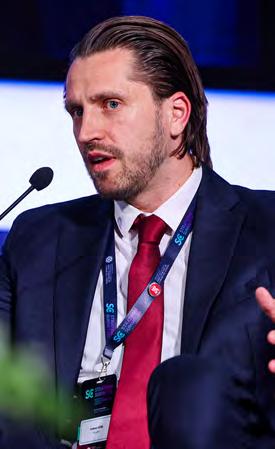


reputational damage and matters of regulatory compliance. In the midst of the industry’s rush to embrace proptech and AI, some experts are concerned that real estate firms may not have been paying sufficient attention to the vulnerabilities that come with it.
Martin says: “Cybercrime is a new and dangerous industry which is already impacting all of us. As much as real estate keeps embracing tech, these risks will increase, but already today cyber risks are well present for all of us.” He also points out that AI is quite expensive tech and says that “investing in AI only for the sake of it, without any real problem to solve, could drive negative return investments or applications without any value-add for the industry”.
Horn adds: “Initial AI implementation can be costly, but in the midterm, it leads to greater productivity and efficiency. Equally important is workforce enablement — ensuring teams are trained to fully leverage AI’s potential is crucial and often overlooked.”
WEDNESDAY, MARCH 12 MAKE IT HAPPEN STAGE
HOW SOME ORGANISATIONS GET AN UNFAIR ADVANTAGE WITH AI: 10.00 - 11.00
A 101 FOR SENIOR REAL ESTATE LEADERS: 11.30 - 12.30
HOW DATA CAN HELP SOLVE REAL ESTATE PROBLEMS: 14.00 - 15.00
READYING YOUR BUSINESS FOR A DIGITAL WORLD: 15.30 - 16.30

The need for shelter that caters to a wide variety of communities is prompting incredible blue-sky thinking in the housing space
As global housing shortages deepen, the international real estate community is seeking to offer solutions to the public sector and progressing projects of its own.
In recent years MIPIM’s Housing Matters! summit has shared many remarkable stories. One of these is Fratries, a French initiative to tackle issues around poor-quality housing and inclusion for young people with disabilities. The solution — modern coliving spaces in which young workers, with and without disabilities, simply live together — has already transformed
hundreds of lives. Since its launch in 2021, Fratries has opened six houses — three in Nantes, one in Rennes and two in the Paris region — and plans to launch another three in 2025, including one in the city of Paris.
Co-founded by Emmanuel de Carayon and Aurélien L’Hermitte, de Carayon says that the original plan for Fratries was for a place where “everyone could live together, disabled or not — like any other coliving”. He adds: “Today, we are well on the road to fulfilling this vision, if not even further along than we envisioned.”
He notes that the solution is not merely about shelter. “Fratries is changing
mentalities and expectations about disability by offering young professionals with mental disability the opportunity to live the life they want to. Our next goal is not only to open a few more coliving spaces, but also to inspire other actors in the coliving and real estate sectors that housing people with a mental disability is not hard — it should even be the norm.”
He adds: “The roommates are really enjoying their experiences in a Fratries coliving. They stay for an average of 18 months, which is longer than the usual time in a coliving. They like to say they live in a sort of ideal micro-society where everyone is equal.”
Fratries has found key partners for its schemes in the Paris region. “In Versailles, we worked alongside Solifap, a social investment company which bought the house and is renting it to Fratries with a very low rent,” he says. The 10-bedroomed property, with ensuite bathrooms, also has generous shared amenities including a media room and garden, while the home manager has an apartment in a private section of the house.
Last year also saw Fratries acquire its first building in the heart of Paris, in the 15th arrondissement, in partnership with Remake Asset Manage-
ment on behalf of the SCPI Remake Live fund. “This 750 sq m building will house 16 roommates, with a bedroom and a private bathroom each, with an expected opening in the third quarter of 2025.”
De Carayon adds: “We’d now like to organise a big get-together for all the Fratries roommates across our coliving houses, to enhance the sense of community they already feel. They are eager to meet each other and share their experiences, as each house of course works differently.”
Importantly, there are now plenty of initiatives across Europe which are seeking to tackle both specific and general issues around housing. In the UK, SoloHaus homes are innovative, low-cost modular homes designed specifically to support and protect vulnerable residents. Delivered through a partnership between Harlow Council and The Hill Group, a recent tranche of SoloHaus schemes will support homeless people in the region.
Andy Hill, founder and group chief executive of The Hill Group says: “We’re excited to begin work on the deployment of these SoloHaus homes, which will offer essential housing for vulnerable individuals seeking a safe and supportive environment to rebuild their lives. Our regeneration
partnership with Harlow Council continues to grow as we take on new projects across the town, and we’re eager to keep working toward a brighter future for the local community.”
SoloHaus homes are purpose built in factories in the West Midlands by Hill’s manufacturing partner, Volumetric Modular. Each home arrives ready for installation which is quick and straightforward and comes complete with furniture, bedding and kitchen equipment such as plates and cutlery.
Building sustainable homes is another way to make a meaningful difference to communities. In October, the Urban Splash Residential Fund (USRF), and its Investment Adviser Sure Capital Partners, entered into a £200m partnership with sustainable developer Citu for the provision of resilient, mixed-use neighbourhoods in northern England.
The strategic partnership covers 600 homes with opportunity to grow, and includes an initial purchase of 52 Citu homes within the Climate Innovation District in Leeds and Kelham Central, Sheffield. Both developments follow Citu’s placemaking principles creating resilient, green, mixed-use neighbourhoods of low-energy homes, focused on peo-

HOUSING MATTERS! SUMMIT GRAND AUDITORIUM STAGE MONDAY, MARCH 10
13.00 - 18.00

ple and communities. “Our mission is to cultivate a portfolio of design-led homes for renters,” says Akeel Malik, partner at Sure.
Yorkshire-born Citu creates homes that work to Passivhaus principles, making them approximately 75% more energy efficient than a traditional home in the UK. Citu’s homes are also manufactured locally in its Yorkshire factory using modern methods of construction (MMC) that substantially lower carbon emissions.
In Germany, meanwhile, Urban Partners’ real estate investor Nrep recently inked a strategic joint venture focused on the German residential rental market with Frankfurt-based asset and investment manager aam2core Holding. The €300m joint venture covers the acquisition, modernisation and operation of rental assets across demographically attractive German cities and metropolitan regions, in particular the seven most populous cities. The aim is to create an institutional-grade, sustainability-focused portfolio, achieved through energy-efficient renovations and exploring untapped building rights potential.
Rune Kock, CEO of Nrep, says: “The discrepancy between supply and demand in the German housing market remains acute. This, combined with the pressing need to accelerate the green transition of the built environment, has created a strong investment thesis for this type of sustainability-focused residential product.
“This represents the latest commitment from Nrep’s NSF V Fund, the €3.65bn value-add fund that targets unmet societal needs arising from urbanisation, including the lack of customer centric and sustainability focused housing in large and growing cities.”
The joint venture has already signed its first acquisition in Cologne, a residential building with more than 5,000 sq m of rental space and a reserve of building land. In conjunction with a green retrofit of the existing building, an additional 3,000 sq m of new residential space will be developed.
11-14 March 2025
La Croisette, Cannes, France
Hotel & Tourism takes center stage at the entrance of La Croisette: Explore top hospitality projects, gain expert insights, and network with the most influential players in the industry - all in an exclusive 500-sqm space designed for high-level business connections.


1,000+ H&T and investment leaders















Research showing that diversity, equity and inclusion increase creativity, innovation and financial performance is igniting change in real estate
Commercial real estate (CRE) has taken huge strides in recent years in terms of its approach to diversity, equity and inclusion (DEI). The third iteration of The Global Real Estate DEI Survey, published in 2024, found not only that 96% of CRE firms have DEI strategies, but are increasingly focused on scholarships and internships within the workforce. Firms adopting formal DEI strategies increased by 5% yearon-year, according to the survey, which is supported by 19 real estate industry associations globally. Key highlights from the Global Real
Estate DEI Survey show commercial real estate firms are increasingly focused on attracting more underrepresented people to the industry as a whole — with 31.6% of firms saying the most impactful DEI policy in 2023 was creating scholarships and internships to increase diversity in candidate pools, up from just 18% of firms the year prior.
In terms of employee demographics, headline data shows the representation of women in commercial real estate ranged from 39.8% to 45.6% across the four regions surveyed, which comprise Asia-Pacific, Europe, Canada and the US.
The real estate industry is uniquely equipped to build more diverse and equitable communities
In Europe, which represents 11.9% of respondents, the survey found that 39.8% of all commercial real estate roles in Europe are held by women, with women making the most gains in 2023 at the executive management level. Meanwhile, 25.4% of executive management roles are held by women, up from 12.9% in the year prior. European firms also actively hired and promoted women for the most senior roles in their organisations in 2023. At the executive management and senior level, firms promoted and hired more women than was currently represented, helping to move the needle on representation.
FLASHEZ POUR VOUS ABONNER !

Lisez l’Opinion sur tous vos écrans et retrouvez nos contenus


1
Explorez toute la richesse de l’Opinion
Par le biais de notre site web ou de notre application mobile, profitez d’un accès illimité à tous les articles réservés aux abonnés.
Accédez aux meilleurs articles de The Wall Street Journal sélectionnés et traduits en français par notre rédaction. 2 LES AVANTAGES DE L’OFFRE
engagement
3
Feuilletez l’Opinion en avant-première
Accédez à votre journal numérique dès 20h, la veille de sa parution.
Stéphanie Bensimon, head of real estate, Ardian France, says: “There are still fewer women working in real estate than men, either because there are not enough applicants for hire or because women leave the business at a certain stage of their career, often during life-cycle events such as maternity. And certain gender pay gaps still exist. So, there is still a long way to go, but we can already see positive changes.”
Experienced investment specialist Jessica Hardman recently founded a new business, Aboria Capital, alongside Bay Downing, executive director of UK living sector developer and operator Downing. Aboria’s aim is to capture opportunities in the UK living sector, building on Downing’s £1bn+ (€1.2bn) development pipeline, with plans to eventually expand to Continental Europe.
DEI is a key principle for Hardman, she explains: “As a female leader in the real estate sector I am passionate and absolutely committed to improving gender and racial diversity—- it’s proven that DEI increases creativity, innovation and financial performance,” adding: “As co-founder of Aboria Capital and as president of the British Property Federation, I understand that change takes time, and while significant strides have been made over the last decade, more needs to be done to educate young people from all backgrounds about the incredibly wide range of opportunities our industry offers.”
The topic has also informed her approach to building her own business, following on from her former role as head of European portfolio management and UK CEO of investment manager DWS. “Ahead of taking the leap from a CEO role at a large corporate to launch my own business, a risk I know many women are reluctant to take, I was really pleased to partner with Downing, which is a highly diverse organisation, with approximately 50/50 gender split.
“As the founder of a startup, you must be pragmatic and match the needs of the business with the right talent, and so far the team is a mix of
women and men. Looking forward, I endeavour to do the right thing, not the easy thing, by digging deep into the industry to ensure we find the best candidates to join us from diverse backgrounds.”
Hardman sees the topic moving beyond the workplace to having a positive impact on society as a whole.
“Since launching Aboria, I’ve had so many messages from women who’ve been inspired by what I’ve done, and I’ll always do my best to support anyone who would like a chat about what to do next if they have hit a barrier in their careers or wish to pivot their skills,” she says.
The trend of companies placing greater emphasis on the wellbeing of their people accelerated significantly during the pandemic and has remained a major theme for occupiers across CRE. In the wake of employees enjoying a taste of working from home, offices need to work a little harder to be compelling places in which to spend time, suggests Michael Wiseman, head of office leasing at British Land.
“Gone are the days of staff sitting in dark cubicles in faceless offices on isolated business parks, with nothing but a café around the corner as an option for lunch. To attract high-performing teams back to the office, the experience of coming to work must be more appealing than sitting at home,” Wiseman says. “British Land owns and manages three ‘campuses’ in central London. As owners of the buildings and the spaces around them, we can create vibrant, safe places where we can influence the experience around the building — which, increasingly, is as important to tenants as what goes on inside,” he adds.
However, Andrew Angeli, global head of real estate research & strategy at insurer Zurich, notes that as CRE occupiers become more secure about the future of their business and require greater presence in offices, the topic could develop more nuance.
“The story in 2022, 2023 was all about superlatives — employers having to provide best-in-class space including



amenities to attract employees back to the physical office. However, employers now have much greater leverage with the ‘great resignation’ or ‘quiet quitting’ phenomena behind us. Healthy space is important, but it doesn’t have to be the best of the best. We are seeing this expressed in leasing activity, with most leases being signed for mid-level offices, not super prime.”
This year’s MIPIM will once again explore the talent topic with its MIPIM Challengers initiative. Each year, MIPIM selects 16 professionals under the age of 30, to fully participate in MIPIM in Cannes, with free entry passes, accommodation and support, plus dedicated sessions and events to platform their views and network with the real estate community. MIPIM Challengers seeks to create space for the next generation of real estate professionals to bring fresh ideas and new perspectives to the industry, while promoting the values of diversity and inclusion.
THE BATTLE FOR TALENT TUESDAY, MARCH 11
16.00 - 17.00 MAKE IT HAPPEN STAGE
EQUALITY OF OPPORTUNITIES IN REAL ESTATE
WEDNESDAY, MARCH 12 16.00 - 18.00
GARE MARITIME
CHALLENGERS’ CONFERENCE THURSDAY, MARCH 13 14.00 - 15.00
LEADERS’ PERSPECTIVE STAGE
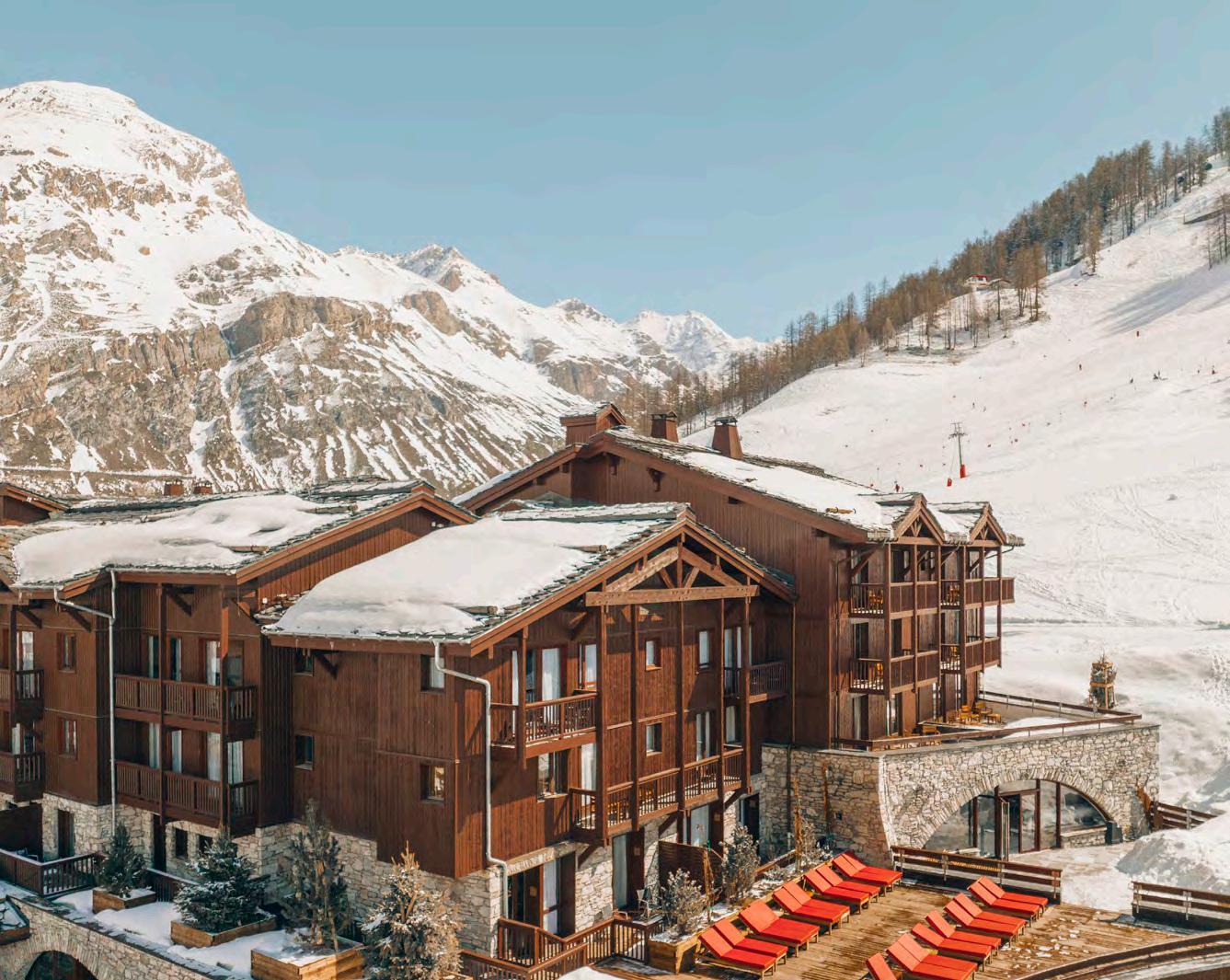
From innovative investment concepts to dynamic renovations, global hospitality leaders are getting ready for a fruitful year
As the global hospitality industry gears up for another year of five-star growth, sector leaders are scrutinising opportunities for expansion.
Luxury all-inclusive holiday specialist Club Med wants to “become the most desirable holiday lifestyle brand offering a life-changing experience to our team and contributing to sustainable tourism”, according to Grégory Lanter, group deputy CEO.
He notes: “The demand for all-inclusive, experiential holidays, particularly ski and beach destinations, continues to grow, driven by evolving guest expectations for freedom, wellness and meaningful experiences.”
In 2024 Club Med completed its
move upmarket, with 100% of its properties now classified as upscale or very upscale. “This milestone marks a significant achievement and has been a key driver of our record-breaking H1 2024 results, despite a challenging global context,” he says.
Club Med’s growth strategy focuses on elevating and expanding its portfolio with dynamic openings and renovations. “Over the 2025-2026 period, we plan to open five new resorts, including Club Med Borneo in Malaysia (2025) and our first beach and safari resort near Durban, South Africa (2026). These new destinations align with our commitment to open resorts in the most beautiful places around the world.”
Growth must also align with the company’s goals for sustainability, however.
CONFERENCES & EVENTS AT MIPIM 2025
HYBRID HOSPITALITY: MULTI-DESTINATION ASSETS
TUESDAY, MARCH 12
14.00 - 15.00
LEASES AND CONTRACTUALIZATION
WEDNESDAY, MARCH 13 10.00 - 11.00
SHIFTING SANDS: THE IMPACT OF FALLING INTEREST RATES ON HOTEL INVESTMENT
WEDNESDAY, MARCH 13
14.00 - 15.00
SUSTAINABLE ATTRACTIVITY: REDEFINING DESTINATIONS BY ATTRACTING HIGH IMPACT PROJECTS
THURSDAY, MARCH 14
10.00 - 11.00
HTL CONNECTION STAGE – C21
“Through our ‘Happy to Care’ initiative, we are scaling up our efforts to support local communities and promote sustainable development across all operations,” he adds. “We are also advancing our digital transformation through our Happy Digital and AI strategies, aiming to enhance the guest experience and operational efficiency for our teams.”
Other firms are pursuing growth through smart new concepts. Hotel101 Global, the global hotel expansion arm of the Philippine-based DoubleDragon Corporation, has become one of the most exciting names to watch.
CEO Hannah Yulo-Luccini says: “Hotel101 Global is a technology-driven
hospitality platform that is revolutionising the hospitality industry by offering a branded uniform bite-sized direct hotel-room investment which, as far as we know, is the first and only of its kind in the world.
“Powered by a proprietary digital platform, Hotel101 delivers a seamless experience for both investors and travellers.”
Yulo-Luccini explains that the Hotel101 concept is positioned as a better alternative for those that have traditionally invested in rental property for short-term letting. “The ‘condotel’ concept has existed for many decades but Hotel101 has addressed a lot of the disappointment caused by the traditional non-uniform profit-sharing condotel model. With the addition of premium international locations such as Niseko in Japan, Madrid in Spain, and Los Angeles in the US, Hotel101 has received increasing attention from international markets,” she adds.
Each Hotel101 property is divided into individually titled hotel units that are sold to individual investors who can opt to have Hotel101 manage their hotel units in exchange for a share in the gross room revenues of the hotel. “This model ensures stable and predictable returns, backed by freehold titled property ownership, supported by Hotel101’s commitment to deliver a simple and hassle-free continuing investment experience,” she says.
“Unbeatable efficiency comes from having around 5x the usual size of other branded budget hotel chains. Hotel101 on average has 500 rooms per site and literally has only one type of room focusing on the value-oriented segment which allows it to fully optimize the latest hospitality technology available globally today.”
The latest Hotel101 typical room now comes with prefabricated toilets, and standardised flat pack furniture and a single type of bulb within the whole building. “A customer literally knows what to expect wherever they may be,” she adds. “Hotel101 is efficient to build, efficient to maintain, efficient to operate. A formula that is expected to naturally result in room rates up to 30% cheaper versus any other hotel chain in its category in any specific country.
“Hotel101 aims to standardise the value segment of the hotel industry in the same way global burger chains have standardised their one iconic burger, or in the same way the entire budget airline industry sells the same standardised economy seat.”
Now international investors can also get involved. “The international real estate community can partner with Hotel101 Global in our rapid global expansion plans through various channels, including direct property investments, joint ventures or franchising,” she adds.
“Hotel101’s proven model, backed by cutting-edge technology, creates a smart and sustainable property investment framework that is linked to the hospitality industry. By selling units upfront, Hotel101 generates revenue during the initial development phase, and by operating the Hotel101 properties, Hotel101 establishes a second, longterm recurring revenue stream at the same time securing the service levels and quality of the hotel offering. This dual-income strategy offers flexible return options and financial benefits to potential joint venture partners of Hotel101.”


Global hospitality organisation Best Western Hotels & Resorts (BWH) is another business in growth mode. In 2024, new property openings worldwide reached triple figures, with launches in key regions across the globe, including North America, EMEA and Asia Pacific. Highlights of the openings include a boutique hotel in Palm Beach, Aruba, that houses a curated art gallery, a resort nestled among Kenya’s famed natural wonders, and an elegant property in the heart of Adelaide, Australia.
The dynamic Asia-Pacific region has been an expansion target for many global groups in recent times. Accor has been driving growth in the region with a raft of new openings. In November, the group announced it had secured 27 hotel signings and 8,117 keys year-to-date in the region. Leading the way are the group’s midscale and economy brands such as Novotel and ibis. The premium segment, with brands like Pullman and Mövenpick, is also gaining significant momentum, positioning Accor as an emerging global leader in this high-growth segment. Garth Simmons, chief operating officer of Accor’s premium, midscale, and economy division in Asia, says: “Asia continues to be a dynamic and fast-evolving market for hospitality, and we are thrilled to see the growth of Accor’s hospitality offerings throughout the region. The demand for diverse and distinctive experiences is stronger than ever, and our broad portfolio of brands allows us to meet the varied needs of both owners and travellers. The strategic signings we have secured so far in 2024 reflect our commitment to strengthening our footprint and delivering long-term value across key markets in Asia.”

Sur tous les fronts, nous enquêtons pour vous raconter notre époque en encourageant le doute et la curiosité.
Rejoignez les esprits libres.










sans engagement















SCANNEZ CE QR CODE

POUR EN PROFITER :
RENDEZ-VOUS SUR LE SITE :
directabo.lepoint.fr/partenariats


Des contenus variés
L’accès à tous les contenus du Point, les palmarès, des newsletters thématiques…
Des chroniqueurs et invités inédits à retrouver uniquement sur nos supports.
En exclusivité
Le journal numérique en avant-première dès le mercredi soir.
France’s strategic importance to Europe and its impressive real estate fundamentals continue to attract international attention as the country powers on
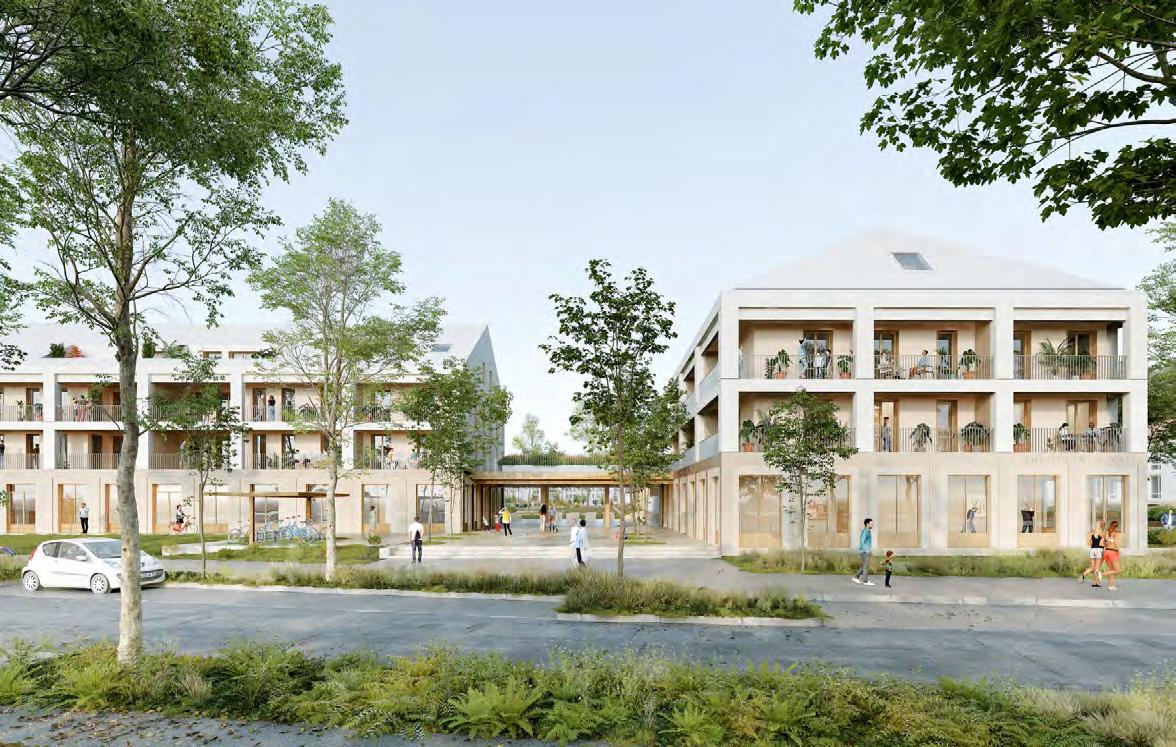
The country may have had its fair share of political turmoil in recent times, but the right ingredients for a strong year in French real estate are all there, according to country experts.
These include significant potential for deals, and competition between investors for them as capital flows unblock; strong potential rental income growth in 2025, across most of the commercial sector; and the powerful draw of Paris as one of the world’s major retail, office and tourism centres, showcased so beautifully by the 2024 Olympic Games.
And there are plenty of strong assets, sectors, urban centres and regional de-
velopment pipelines to pique investors’ interest in 2025, from Brittany to Paris to the Côte d’Azur.
In the Paris region alone, a major programme of transformational works, including no less than 200km of new metro lines, is augmenting the French capital’s status as one of Europe’s most magnetic real estate investment destinations.
So why are investors and analysts still taking a cautious approach to France in 2025? And what will it take for confidence to return?
Economic recovery
Evaluate one of the most balanced outlooks reports for the French mar-
CHOOSE
THURSDAY, MARCH 13 11.00 - 13.00
The Square des Arts project in Chanteloup-en-Brie combines nature, art and quality of life
ket this year, and some of the reasons for this caution become evident: France’s economic recovery depends on factors difficult to predict, and far beyond anyone’s control.
In the focus on France in Knight Frank’s European Commercial Outlook 2025, Annabelle Vavasseur, deputy head of research at Knight Frank France, says: “Economic activity in 2025 will be driven by a rebound in household consumption amid disinflation, with inflation projected to fall to 1.5%, supported by lower energy prices and stronger household purchasing power. The labour market is expected to remain resilient, with unemployment at 7.6%.”

Retrouvez-nous en direct sur notre stand

STAND C1 PALAIS 4
Depuis 10 ans, radio.immo
accompagne les pros de l'immobilier avec des podcasts exclusifs et sera partenaire média du MIPIM 2025 !


À Cannes, radio.immo

capturera les débats et solutions du MIPIM 2025 avec des interviews exclusives d'experts du secteur !




Yet to be too reticent about the French economy would be to overlook France’s many undeniable strengths above other European markets, and the many good reasons why the country is bound to be a landing space for high levels of capital this year.
Take the French logistics sector, for example, which Laurie Lagarde, head of EMEA logistics at CBRE Investment Management says that “core investors are coming back to”, even to the extent that there will be “a real battle for space at the end of Q1 2025”. With the trend for nearshoring showing no signs of abating, she adds: “International investors are diluting risk by spreading out geographically and Europe can offer this. We can see a lot of activity in the UK right now as the market stabilises, but France is also one of the preferred strategies, amongst others.”
Deals demonstrate France’s regional strength in depth when it comes to logistics. M&G Real Estate recently announced some €49m of forward funding for two logistics warehouses in the established submarket of Orléans. The first warehouse located in Meung sur Loire will offer a total area of circa 25,000 sq m, fully preleased to DHL, while the second one in Poupry, purchased on a speculative basis, will offer at delivery 29,000 sq m of dividable grade A areas. Beyond that are many more developments and urban and regional projects that will be on show at MIPIM this year.
The biggest pipeline of developments is, unsurprisingly, in the capital. These works, in the words of Alexandra Dublanche, president of the Choose Paris Region, present “unparalleled opportunities for international real estate investors” interested in France. She says: “Beyond the groundbreaking Grand Paris Express, which is revolutionising mobility with 200 kilometres of new metro lines, we are spearheading projects that redefine urban living and working.
“Eco-districts are being developed to create greener, more inclusive communities, while industrial sites are being revitalised into vibrant mixed-use spaces, combining housing, offices, and cultural hubs.
“Logistics and infrastructure modernisation are also key priorities, with cutting-edge hubs designed to support the booming e-commerce sector. Meanwhile, iconic business districts like La Défense are undergoing upgrades to remain global leaders in attracting companies and talent.”
Among the flagship projects, the Gare d’Austerlitz district in Paris exemplifies this spirit of transformation. This project revitalises a former urban wasteland into a thriving community with over 2 hectares of green spaces, 226 housing units — including 85 for students — and 50,000 sq m of office space. “It showcases a forward-thinking, sustainable approach to urban planning,” Dublanche adds. Beyond the city, the Square des Arts project in Chanteloup-en-Brie, scheduled for delivery in 2025, combines nature, art, and quality of life,
offering sustainable housing, public facilities, and green spaces designed to enhance residents’ wellbeing. Meanwhile, “mixed-use developments, such as the reinvented Les Ardoines district in Vitry-sur-Seine combine residential, commercial, and leisure spaces to foster dynamic communities,” she adds.
The Aix-Marseille-Provence Metropolis will also show a rich programme of opportunities at MIPIM, according to the region’s president, Martine Vassal.
“The Aix Marseille Metro area is offering investors one of the largest urban redevelopment projects, France’s third largest business district, known as Euroméditerranée located in the maritime centre of Marseille,” Vassal says. “Boast-

ing over 40,000 jobs (37500 from the private sector jobs and 6,500 from the public sector), it has led to over 5,300 businesses setting up in the area.
“The total surface will represent close to 5 million sq m by 2035, mixing one of the most successful central business districts with sustainable residential area on the seashore and cultural firstclass landmarks such as the Museum of European and Mediterranean Civilisations (MuCEM).”
She adds that employment growth across the country is likely to boost the need for corporate real estate, which also benefits from France’s green-building expertise.
“The Aix-Marseille-Provence metro area is one of the most diversified in France, alongside Greater Paris. With six sectors of excellence ranging from healthcare, digital, maritime to green industries and energies, aeronautics as well as tourism, the territory is offering a well -balanced offer for real estate developments in various assets,” she says.
“Moreover, Provence is a great place for French and EU talent to spend some of their professional lives, which is one of our greatest assets.”
Globally, competition for real estate investment is going to be tough this year, potentially compounded by political and international economic issues far beyond the industry’s control.
But France has much to offer investors, and a lot in the pipeline to suggest that growth and optimism are returning, even if it is in cautious steps, rather than confident bounds.
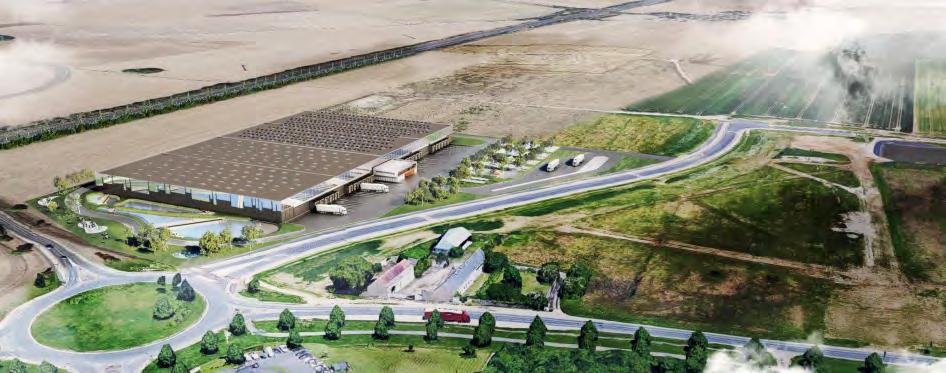

As the country seeks economic renewal, Germany’s strength in depth lies in its federal regions, which will be out in force at MIPIM
Despite challenging economic conditions, a series of shocks to the country’s famous manufacturing base and political upheaval, Germany entered the new year with some positive news for its property sector, which is expected to make modest gains in 2025.
JLL said that property transactions in Germany rose to €35.3bn in 2024, an increase of 14% from a slump in 2023, while Colliers, recorded transactions of €36.2bn, up 12%. Both firms forecast moderate growth in deals in 2025, but total transactions will remain well below long-term averages.
Michael Baumann, Colliers’ head of
capital markets in Germany, says geopolitical uncertainties, the outcome of federal elections in February and the course of the economy “could dent the gradual recovery on the investment markets”.
But in their third annual Emerging Trends in Real Estate report for 2025, PwC and the Urban Land Institute (ULI) saw four German cities in the European top 10 for prospective capital investment with Berlin (4) only trailing London, Madrid and Paris. Munich (5), Frankfurt (8) and Hamburg (9) completed the top German cities.
Sascha Klaus, chair of the board of management of Berlin Hyp, says that the real estate industry expects more deci-
siveness and reliability from the political realm in the new year if that confidence is to materialise into action.
“If the urgently needed reboot of Germany as a business location is to succeed, we need to have a government capable of acting as quickly as possible after the election. The top priority should then be a reduction of bureaucratic obstacles — and for our industry in particular we need to see an improvement in the underlying conditions for new-construction activities and refurbishments,” he says.
German bedrock
It is those federal districts that have proved such a strong bedrock for Ger-
many’s real estate market and as such MIPIM will welcome many of the country’s regions and cities, including Nuremberg, which is looking to take advantage of vacant sites to set the course for urban development and economic progress.
Projects include the construction of the new University of Technology Nuremberg (UTN) and the redevelopment of a building that previously housed the city-centre Kaufhof department store, with the focus on revitalisation and progress. UTN moved into the first, 2,500 sq m, building across six floors in October and the Free State of Bavaria has earmarked a total investment of around €1.2bn for development of Nuremberg’s higher education landscape.
“The new University of Technology Nuremberg is a once-in-a-century project. It is a real boost for the city and the wider Nuremberg metropolitan region as a hub for science and innovation,” says Christian Korinth, corporate support and location development manager for Economic Development Nuremberg. “With the founding of the university, a new district — Lichtenreuth — is emerging as a project for the future. On the site of the former Nuremberg South railway station, 37 ha of land have been set aside for the campus development.
“By purchasing the former Kaufhof department store, the City of Nuremberg is taking control of the development of a city-centre landmark. The aim is to showcase this listed building as an energising statement project, with a ripple effect for the property market throughout the city centre,” he says of the15,000 sq m of retail space, which will be redeveloped in several stages, with the initial focus on the ground floor and the immediate surroundings, with temporary cultural, retail and F&B offerings.
“The purchase of the building and our role as project developer gives us as a local authority the opportunity to influence how we shape this vital part of the city centre,” says Andrea Heilmaier, the City of Nuremberg’s economic and science officer. “We want to develop our city centre and lead it positively into the future.”
Urban transformation projects Set to open in Q1 2025, Westfield Hamburg-Überseequartier will be the largest new development to open in the first half of 2025, designed as an integrated district and central part of the HafenCity in Hamburg. It connects places to live and work with culture and leisure facilities as well as retail, entertainment concepts, including a 10-screen cinema, international and local restaurants, bars and cafés, medical and wellbeing centre, plus a cruise terminal.
It follows another huge mixed-use development by US investment giant Brookfield Property Partners, which paid nearly €1.4bn for the majority of Berlin’s famous Potsdamer Platz in 2016, comprising 17 buildings, 10 streets, two squares, offices, retail, plus residential blocks, leisure and two hotels, all clustered next to the wider Potsdamer Platz, which is also a transport hub.
With work all but complete this year, much has also been done to enhance the public realm, closing off some streets to create walkways and introducing more bars, cafés and retailers, with the leisure offer seen as crucial to attract the office population, local residents and tourists. The most obvious change is the circa €200m spent on the Arkaden shopping centre, now rebranded The Playce.
The first European NBA store, an eco-led Peek & Cloppenburg department store, Dutch-based games operator Game State, cocktail bar
The Alchemist, food hall Manifesto Marketbowling concept Lane7 and Amsterdam-based leisure attraction Upside Down have all opened since.
“The key was to differentiate from other malls and create an environment that had lots of different activations which offered visitors a variety of urban mo-
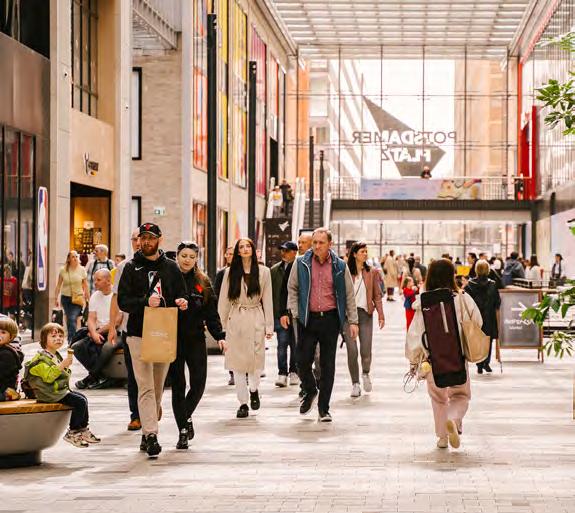

ments,” Brookfield Properties Europe senior vice-president Katharina Treiber says. “We wanted to create a unique inner-city space with retailers who were ideally first in Europe, if not first in Germany or at least first in Berlin.”
Meanwhile, Hannover is to focus on its key strengths, including the creation of tech and innovation hubs, showcasing innovative office spaces, co-working facilities and research parks; sustainable real estate; plus lifestyle and residential neighbourhoods, vibrant cultural districts and recreational amenities.
The city is keen to emphasise that it is behaving anti-cyclically and investing more than ever before — around a third of trade tax revenues are being used for the construction and refurbishment of, for instance, schools, daycare centres, municipal infrastructure amounting to almost €550m for 2025 and 2026.
“The challenges facing the economy in Europe and Germany in particular are huge. Key economic sectors such as the property and automotive industries, which are strongly represented in Hanover as an industrial location, are facing major changes,” says Hannover Mayor Belit Onay. “However, the necessary transformation harbours not only entrepreneurial risks, but above all new opportunities, which are being tackled courageously in many places and offer new possibilities for investment. That is why we are travelling to MIPIM, to showcase positive developments and opportunities. There is good news from Germany.”
CONFERENCES & EVENTS AT MIPIM 2025
GERMAN REAL ESTATE MARKET & CAPITAL: SETTING FOR REBOUND?
WEDNESDAY, MARCH 12 09.30 - 10.30
GEO FOCUS STAGE
11-14 March 2025
Palais des Festivals, Verrière Grand Audi, Cannes
MIPIM proudly presents the UK Hub, an exclusive platform to uncover the wealth of opportunities within the thriving UK property market.
At the UK Hub, international investors, developers, and decision-makers will gain unparalleled access to regional authorities, groundbreaking projects, and key private sector leaders. This premium space is your gateway to discovering the UK’s most attractive investment opportunities, forging high-value connections, and unlocking new business potential.












The new UK government’s 10-year plan is focusing on sectors including real estate to drive long-term growth

Buzzing Manchester is one of the cities at the forefront of change in the UK
The UK will have an enhanced presence at MIPIM this year as the new government aims to attract inward investment as part of its transformational strategy. The 10-year plan focuses on several key sectors that will drive long-term growth and regional development, including renewable technologies and sustainable infrastructure projects. According to Jace Tyrrell, CEO at Opportunity London, the capital remains investible and competitive on the global stage and investor sentiment is “strong and long”. There is an appetite across the asset classes, he says, and solid demand
for build-to-rent and student housing, logistics, leisure, urban sciences, energy and transport infrastructure, and transport-led regeneration and redevelopment. Higher returns forecasted than last year are attractive, aided further by a fall in debt costs that would bolster capital growth in the capital. “This makes ‘long’ London, and its history of resilience and reinvention, a safe haven for global capital preservation with potential for growth,” he says. “With more than £100bn (€120bn) of opportunities to invest in London’s next development cycle, global capital will be key in pushing the dial on future London; as a green, clean, equitable and accessible city.”
Across Manchester and Greater Manchester, councillor Bev Craig, leader of Manchester City Council, says their mission is strongly aligned with that of the new government. “Our region already has the structures in place and is up to the challenge of delivering on key national priorities across housing, transport infrastructure, and growth through innovation and placemaking.”
Among the key projects highlighted at MIPIM will be the Old Trafford Regeneration project, innovation district Sister Manchester, the redevelopment of Wythenshawe, Holt Town and Salford Crescent, and a new regeneration
framework for Strangeways.
The team from Central South UK will be promoting a multitude of projects and opportunities in the region including Talbot Quarter in Bournemouth; a vision for renaissance in Southampton; City Centre North in Portsmouth; Havant Plaza in Havant; Fareham Town Centre Regeneration and Basing View in Basingstoke; and the Solent Freeport.
Leigh-Sara Timberlake, CEO Business South says the increasingly regional approach to funding for infrastructure, whether through devolution or region-wide concepts such as the Freeport, are a clear attempt

by government to ensure that the big wider-than-local issues are not held back by inward-looking local politics. She says this is “particularly welcome in the Central South UK where the strong allegiance between the public and private sector is allowing ‘big discussions’ over big-ticket items such as water transport, rail infrastructure between cities and the growth of our ports and airports”.
The Liverpool City Region will be showcasing investment opportunities worth £6.3bn across commercial and residential sectors. The region’s new Life Sciences Innovation Zone exemplifies the region’s momentum, forecast to attract £800m investment through high-quality facilities and financial incentives, while leveraging world-class university partnerships and one of Europe’s largest bio-manufacturing clusters in a cohesive ecosystem that already includes global players such as IBM, Unilever and the Gates Foundation.
With ambitious targets including nearly 8,000 new homes annually and a commitment to achieving net-zero by 2035, the region is offering opportunities across sustainable infrastructure, urban regeneration, and brownfield development.
The Invest Newcastle MIPIM delegation will be showcasing a portfolio of major projects and investment opportunities while also highlighting the city’s track record of delivery, with transformative schemes such as Newcastle Helix and Pilgrim Street now approaching completion.
Among the new schemes is Forth Yards, a 51-acre regeneration area
occupying a commanding position along the Western edge of the city centre, with the River Tyne as its southern boundary. The Health Innovation Neighbourhood, on the site of the city’s old general hospital, is a £500m urban-regeneration project to deliver commercial and research facilities, student residential and private-rented accommodation.
The City Gateway East Project, led by Northumbria University, will be anchored by two major development projects: the North East Space Skills and Technology Centre (NESST) and the Centre for Health and Social Equity (CHASE). On the retail and hospitality side, Eldon square will undergo a £65m overhaul.
Jen Hartley, director of Invest Newcastle at NewcastleGateshead Initiative (NGI) says the schemes nearing completion and the new projects will deliver for investors and for the city. “Together these will drive tens of thousands of new jobs for the city but importantly for us will really have a huge, long-lasting impact socially,” she says.
In Northern Ireland, the Belfast region will be showcasing transformative momentum across multiple fronts, with some £1bn of investment through the Belfast Region City Deal firmly in delivery phase. Notably, the advanced virtual production facilities at Studio Ulster at Belfast Harbour Film Studios are helping position Northern Ireland at the forefront of the global screen and gaming industries, while AMIC — Advanced Manufacturing Innovation Centre, led by Queen’s
CONFERENCES & EVENTS AT MIPIM 2025
LONDON STAND STAGE
AFFORDABLE HOMES
TUESDAY, MARCH 11
12.00 - 12.45
GREEN RETURNS: THE STATE OF SUSTAINABILITY ROI IN 2025
WEDNESDAY, MARCH 12
10.00 - 10.45
PLANNING HEALTHY CITIES
THURSDAY, MARCH 13
15.00 - 15.45
INVESTMENT STRATEGIES FOR CLEAN BUILDINGS
TUESDAY, MARCH 11
14.15 - 15.00
ATTRACTING INVESTMENT: SOUND FUTURE STRATEGIES FOR UK REAL ESTATE
WEDNESDAY, MARCH 12
10.50 - 11.35
FUNDING TOMORROW’S HOUSING MARKET
WEDNESDAY, MARCH 12
16.00 - 16.45
URBAN REINVENTION TO BOOST RESILIENCE
THURSDAY, MARCH 13
10.15 - 11.00
University Belfast — is one of a number of game-changing projects under way in the wider city region.
Cardiff Capital Region (CCR) will be back on the Croisette — bigger and more ambitious than ever, says Kelly Beirne, CCR’s chief executive. “This is an important year for both us and prospective investors as we look to establish new long-term partnerships. In a matter of years, CCR will be home to a new electrified Crossrail network, a prime multipurpose arena at Atlantic Wharf, a £160m investment zone, and more,” Beirne says. “Our region is unique in terms of its devolved statutory powers, political access and availability of investment funds. We also have a proven track record of working with the private sector as co-investors, which offers speed and certainty in delivering shovel-ready projects.”
Atlantic Wharf is a leisure-led scheme with £500m GDV, set to deliver 155,000 sq m of mixed-use development across the 30-acre site. A highlight of the scheme is a new 15,000-capacity multi-purpose arena, which will be delivered and operated by Live Nation, alongside commercial, food and beverage, residential, hotel and cultural spaces. Cardiff Crossrail is a landmark collaboration between Cardiff Council and Transport for Wales, set to bring to South Wales what its namesake brought to London. The first stage between Cardiff Central and Cardiff Bay is scheduled to start in autumn 2025 and complete by 2029, with £100m of funding already secured from the UK and the Welsh government.


Rampant GDP growth, skilled labour and connectivity are all driving real estate investment strategies in CEE
Central and eastern Europe (CEE) is shaping up to be one of the most strategic investment destinations for 2025, according to Bert Hesselink, group business development director of industrial and logistics specialist, CTP.
“Since 2010, real GDP growth has outperformed Western European markets and the whole of Europe, growing by almost 50%, more than double the EU average,” Hesselink says. “This trend is set to continue, with real GDP growth forecast to nearly triple that of Western Europe’s in the coming years.”
According to Hesselink, the rise of the
region “is the result of a potent mix of factors, such as massive investment in infrastructure that has greatly improved connectivity; robust and diversifying economies; rising consumption and the accelerating growth in e-commerce, as well as a skilled workforce and strong labour market fundamentals.”
Notably, these are all factors which have made CEE synonymous with industrial and logistics development.
Another pan-European specialist in this field, Panattoni, has seen cross-border capital pick up its new developments with increasing speed.
A recent deal, which saw Panattoni divest two logistics parks in Poland, namely Panattoni Park Ruda Slaska
CEE REAL ESTATE – GLOBAL APPEAL, MARKET DYNAMICS, AND INVESTMENT TRENDS
WEDNESDAY, MARCH 12
15.30 - 16.30
GEO FOCUS STAGE
III and Panattoni Park Kraków East II, is emblematic of this trend. The parks were sold to a prominent international investor, making its Polish debut.
CEE industrial and logistics is also benefitting from global megatrends, such as the continued rise of nearshoring and friendshoring as companies reassess their global supply chains following the pandemic and increased geopolitical risk. No wonder, then, that the finance community is underwriting future developments. Global investor and real estate developer Hillwood recently closed a €368m loan with Aareal Bank to this end.
The refinancing relates to Hillwood’s extensive EU Club III portfolio of Class A logistics properties, comprising 18 assets strategically located in Poland and Germany — five in Germany and 13 in Poland. The investment loan is structured to be split into two tranches: €303.43m available immediately on day one and an additional €64.76m reserved for future developments. The loan includes an investment facility for 14 operational assets and additional funding for four projects scheduled to commence construction in 2025.
Hillwood’s Industrial Park Poland, located in Krągola on the A2 highway, has been described as one of the largest schemes planned for construction in the country. Well located to connect western and eastern markets, the proximity to the city of Konin provides access to a qualified labour force. The project offers over 600,000 sq m of modern class A warehouse space and benefits from significant new roads built to support the scheme. Hillwood is now marketing the site to data centres, as well as tenants from the e-transport sector and high-tech manufacturing. Referencing the site’s power capacity, Piotr Łada, director of project management at Hillwood says: “We know we are one of the best in this part of Europe, there is no other industrial site in Poland with 200 MW guaranteed.”
While logistics and industrial has proved a key sector for the region, it is not the only asset class standing out in CEE. Towards the end of last year, Ghelamco divested the 46-storey office tower Warsaw Unit in Poland, in a deal described as the largest office transaction of the year. Swedish real estate company Eastnine paid €280m for the prime property.
Jaroslaw Zagórski, managing director, Ghelamco Poland, says: “Warsaw UNIT sets the highest standards in the Polish and European office market. “It is an office icon of the capital, which in terms of the quality of the working environment and sustainable solutions not only matches the best Western European developments, but in many respects surpasses them. We are very pleased that this was appreciated by our partners at Eastnine, for whom these aspects are very important when

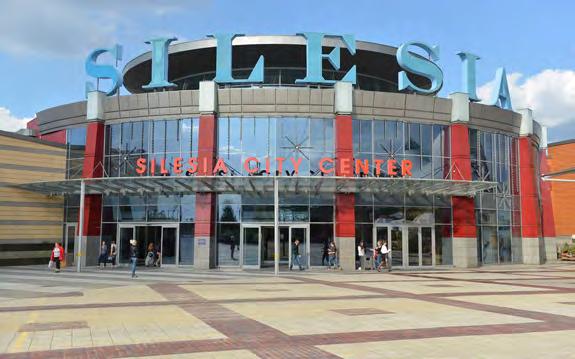
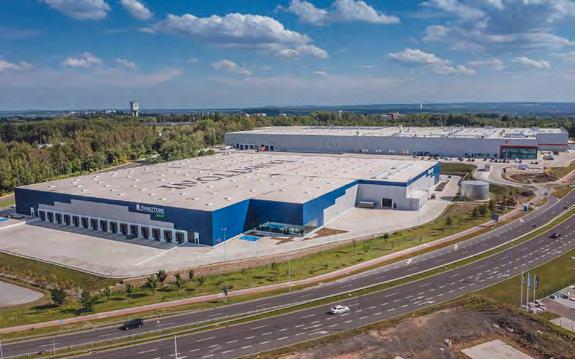
building an office portfolio.”
Warsaw Unit is 202 metres high and comprises 59,800 sq m of leasable area and 400 parking spaces, spread over 46 floors above ground and three below.
Completed by Belgian developer Ghelamco in 2021, the building is certified BREEAM Outstanding and WELL Core v2 Platinum. The property is fully occupied with more than 20 tenants, including the headquarters of Polish insurance company Warta, and offices of Amazon, Stryker, Moderna, CBRE and Panattoni.
Meanwhile, Karimpol Group has started work on a second phase of its Skyliner Office Complex in Warsaw, a 28-storey
structure which will provide modern office space in the very centre of Warsaw. The 130-metre-tall Skyliner II is scheduled for completion at the end of 2026.
Retail is another area that has been flourishing. Underlining this trend, investor Nepi Rockcastle recently acquired Magnolia Park shopping centre in Poland from Germany’s Union Investment for €373m in an off-market transaction.
Rüdiger Dany, Nepi Rockcastle CEO, says: “Magnolia Park is a dominant shopping centre in Wroclaw the country’s third largest city and one of its richest. The acquisition will significantly strengthen the group’s portfolio, consolidating its position as the premier retail real estate owner in CEE.”
The 100,000 sq m Magnolia Park enjoys a strategic location in Wroclaw, with excellent visibility and access both by car and public transport.
Weeks later, Nepi also closed on a €405m deal to buy Silesia City Center, a shopping mall in Katowice, Poland. The deal marked the biggest single-asset shopping-centre transaction by value in Central and Eastern European markets in recent years.
Perhaps unsurprisingly, commercial development drives are supporting the need for more housing across the region. Echo Investment’s Fuzja in Łódź is a mixed-use scheme which will feature modern loft-style apartments which are selling fast. IT giant Fujitsu has moved into two office buildings within the complex. Meanwhile, Capital Park Group recently launched a landmark development in Katowice, Nowy Wełnowiec, which will become home to a modern mixed-use district with predominantly residential functions. Around 10 hectares will be dedicated to greenery and recreational areas.
“The Nowy Wełnowiec project aims to transform a part of the city which is currently inaccessible into a modern, mixed-use, multigenerational space where life revolves around greenery and community. It will be a place where nature co-creates the surroundings while the space between buildings becomes more important than the buildings themselves,” says Tomasz Napieralski, architect and partner at JEMS Architekci.

DEMANDEZ UNE DÉMO


Visualisez et explorez les données de marché en temps réel* avec un niveau de détail inégalé (chaque transaction est détaillée)
*Source CFNEWS DATA, données compilées et structurées par nos analystes, vérifiées par nos journalistes experts du Real Estate
Filtrage des données par stratégie, régions, typologie d’actifs, investisseur, valorisation métrique...
Suivi jour après jour des grandes tendances de l’investissement immobilier
LOCALISER
Cartographie complète des transactions en France avec géolocalisation
Graphiques et transactions exportables & exploitables immédiatement (Excel, PDF, PNG, JPEG)
Contactez-nous : abo@cfnewsimmo.net
The cities of Oslo, Helsinki and Stockholm are gearing up for a new cycle of investment strategies

Liquidity and demand are expected to return to the Helsinki market this year
While Northern Europe has been one of the success stories of cross-border investment across the continent, the past two years have been challenging. Stockholm has become a major tech hub and Oslo has enjoyed a cultural renaissance, yet the dynamics of the real estate market have, for the past two years, been shaped by rising interest rates, weaker sentiment, and challenging financial and economic conditions. However, with the initiation of an interest-rate-cut cycle and improvements in the bond and equity markets, investor
sentiment has shifted positively and for Swedish real estate more attention is being given to the operational status and quality of underlying real estate portfolios, particularly in the office sector, according to Cushman & Wakefield.
Signs of Swedish recovery
“Investment activity in Sweden has started to recover from historically low levels, with several office transactions carried out in Stockholm during 2024. Outside the capital and its strongest submarkets the office investment market remains relatively cautious, with concerns about demand in the occupier market persisting,” says Cushman &
CONFERENCES & EVENTS AT MIPIM 2025
GLOBAL OPPORTUNITIES IN THE NORDIC MARKET
WEDNESDAY, MARCH 12
14.00 - 15.00
GEO FOCUS STAGE
Wakefield head of strategic advisory, Staffan Dahlén. “The quality of office assets will be crucial in the coming years to attract interest from both occupiers and investors.”
In its most recent figures, advisor JLL says that the Stockholm office market showed signs of stabilisation in Q3 2024, with the overall vacancy rate marginally decreasing to 13.4% for the first time in two years. This represents a reduction of approximately 14,000 sq m of vacant space during the quarter and prime rents have remained stable, particularly for high-quality, central locations.
The flight to quality trend continued, with tenants seeking modern, sustaina-
The North of England is home to more than one million businesses, 15 million people, and has a regional economy worth more than £340bn, according to the Department for Business & Trade. Our population and economy are growing but a gap persists with the UK average productivity per head.
For some of you Place North may be a new name, but we have been supporting the Northern property market for a long time now. With a robust readership, reputation for editorial excellence, and 18 years of experience in delivering high-quality events, Place North is perfectly positioned to champion our region on a global stage.
I’m urging both UK businesses who are exploring opportunities and international organisations looking to invest in the North to engage with us as we curate the North of England’s presence at MIPIM 2025, connecting the largest investors, developers, and local government executives to accelerate inclusive and transformational growth.
Place North offers you the chance to create and support local development partnerships on the biggest stage in the property world.
MIPIM’s new UK Hub will feature a dedicated North of England stand, with Northern events on the UK Stage.
Place North’s Partners, a mix of national and international business and regional local authorities will come together under one banner to position themselves at the forefront of the pro-development era for the UK. By working together, we can ensure the North’s voice is heard and the success that lies ahead for the places and people of this dynamic set of regions is shared by all parts of society.
Come and visit the Place North stand in the UK Hub to find out what investment opportunities exist in our fine region and meet the key public and private sector leaders who will help make your investment work.
Be part of it, be part of Place North at MIPIM and let us help you access the very best of what the North of England has to offer.
Dino Moutsopoulos Managing partner, Place North sales@placenorth.co.uk
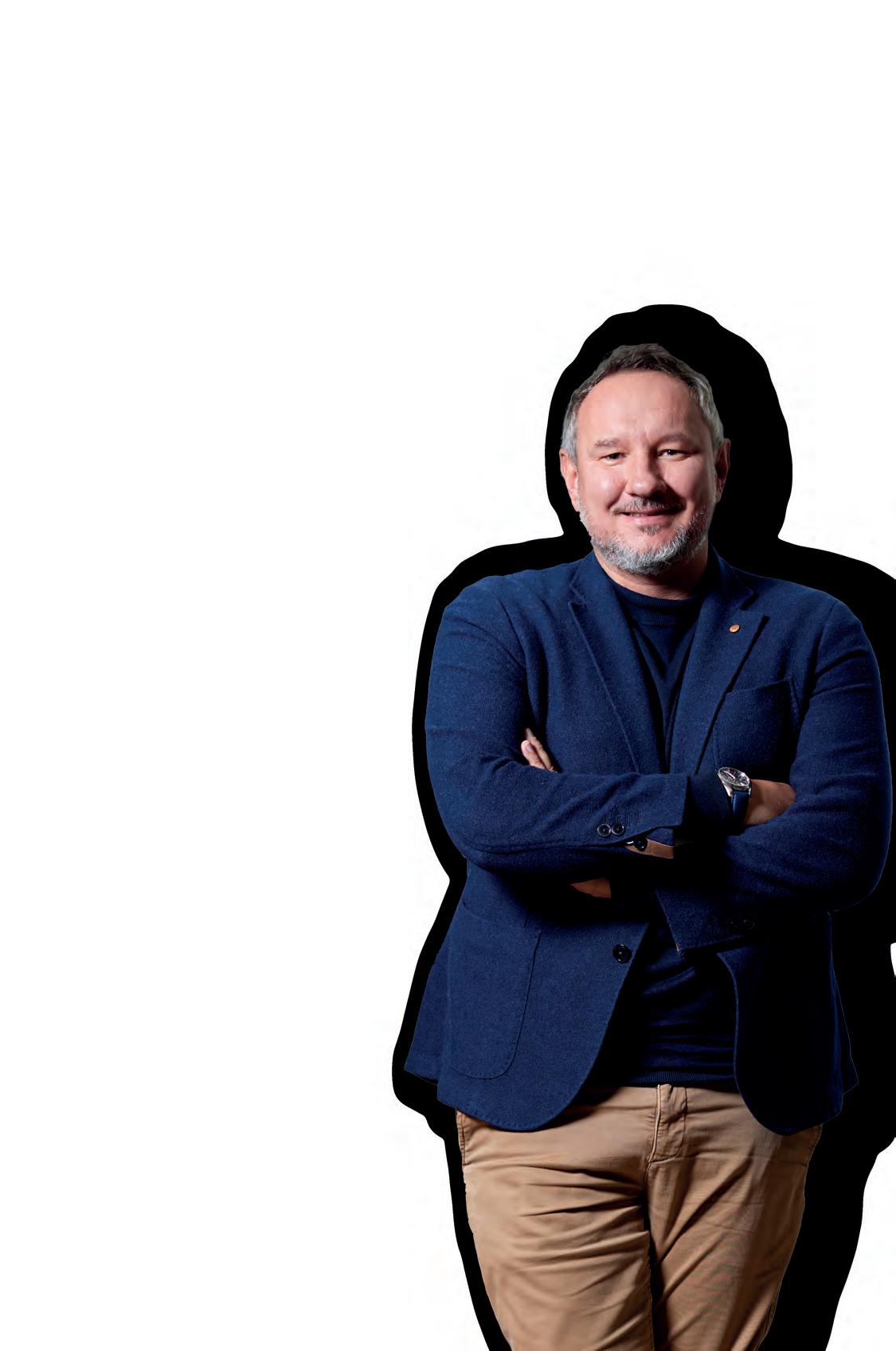
ble spaces while often downsizing their total take-up, while the take-up volume for the last 12 months was approximately 470,000 sq m, relatively unchanged from the previous year.
“The CBD continues to show resilience with a lower vacancy rate of 7.1% compared to other submarkets. The market outlook is cautiously optimistic. Improved financing conditions, due to policy rate cuts and a more active bond market, may support increased transaction activity. The limited pipeline of new office space could help balance the
market in the coming years, potentially supporting rental levels in desirable locations,” says JLL head of research Sweden, Erik Neyman.
Neighbour Oslo has experienced many of the same challenges, although its reputation as a tourism draw has been bolstered by a spate of cultural attractions that have opened in recent years, from the city’s national museum to the Munch art collection and the stylish national library and opera house. Many

of these new buildings occupy the dock areas, regenerating large waterfront areas of the city, while a significant block of Oslo’s retail centre is owned by a single landlord — Promenaden Management, part of UK-based MARK — which has helped boost Norway’s luxury offer in the city centre.
This has been anchored by the floorby-floor transformation of department store Steen & Strøm, plus the expansion of the stores available to luxury brands in the surrounding Promenaden Fashion District, with the most recent addition Norwegian watch retailer Bjerke’s multi-brand watches centre in the remodelled Eger Shopping Gallery, creating perhaps the largest watches emporium in Europe.
“The project has been to build a new retail neighbourhood with many buildings having offices above, but the space available is quite constrained, so we continue to look at opportunities to expand and grow the areas,” says Promenaden chief executive Annette Lund, who also points to the growth of Oslo as a tourist destination and the impact of cruise ship arrivals on footfall.
However, the office market has continued to be subdued. The average office rent in Oslo was up by around 3.6% last year, with most sub-markets experiencing positive growth. Notably, Bryn-Helsfyr has seen a significant annual increase of over 12%, likely driven by contracts signed for new office development projects in the area, CBRE points out.
The office vacancy rate has remained
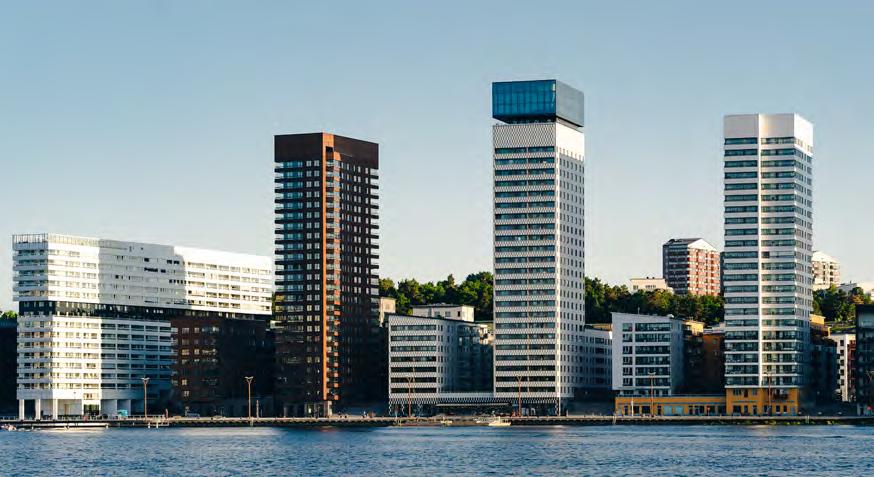
stable at 6.4%, with approximately 155,000 sq m of new space expected to be completed this year, primarily because of the expected completion of Construction City and the first stage of the new Government quarter.
As for Helsinki, activity in the Finnish transaction and development market was at record lows in 2023 and 2024 as capital values in all asset classes saw significant decline after the interest rates started increasing, says Joonas Lemström, NREP head of Finland.
“There is still a gap between seller and buyer pricing in the market and that combined with the limited amount of forced sales in the Finnish market has led to low transaction volumes in recent years,” he says.
He expects 2025 will still see low volumes as prices in most segments have bottomed out and pricing gap between seller and buyer remain,s but says that in the longer run he expects transaction volumes will be €5bn or more. Cross-border investment volumes in Finland over the past five years have represented circa 50–60% of total transaction market, and going forward should continue to represent a significant share of the Finnish transaction market.
“The housing market in Finland has been more difficult due to oversupply as a result of a large number of new developments. This has led to slow rental growth in key residential markets and to a total standstill in the development market. Now with limited new supply coming into the market and strong growth of the largest Finnish cities driving demand we expect rents to start growing soon, which will create opportunities for attractive new investments and developments in the strongest locations,” he says.
“The development equation is still tight, which will keep housing development volumes low in 2025 and likely in 2026 as well. There is liquidity and demand, but due to a limited number of active sellers we anticipate that residential transaction volumes will remain low in 2025. The most attractive areas will continue to be the Helsinki Metropolitan Area (HMA), Tampere and Turku,” he adds.
Public and private initiatives to transform Southern Europe are translating into some inspiring opportunities for international investors

Vibrant Southern Europe has become the focus of serious investment strategies in recent years, with asset classes including hospitality, logistics, offices and residential all bringing rewards.
The Iberian Peninsula’s stand-out opportunities have not gone unnoticed. Henry Gallego, founder and CEO of the RKS Group and Ktesios, says: “In Spain, we are observing how core urban regions are experiencing a process of transformation. Both international and national individuals are moving to cities like Barcelona and Madrid be-
cause of the expansion of services and working opportunities. Nonetheless, this consequent growth of demand is not paired with supply of housing, creating a fierce price increment.” He adds that, in particular, “non-prime real estate markets in Spain have become a focal point for international investors due to their growth potential and attractive returns”.
Gallego explains that RKS AM is a major servicer of residential assets in non-prime areas of Spain, managing the assets of Ktesios Socimi, which recently acquired the portfolios of QPQ and RKS Real Estate Luxembourg. A focus on sustainability means that RKS
CONFERENCES & EVENTS AT MIPIM 2025
FOCUS ON SPAIN
GEOFOCUS STAGE
WEDNESDAY, MARCH 12
12.30 - 13.30
ITALY AND BEYOND
LEADERS’ PERSPECTIVE STAGE
WEDNESDAY, MARCH 12
12.45 - 13.45
CATALAN CONFERENCE
SALON CROISETTE
WEDNESDAY, MARCH 12
16.00 - 17.00
PORTUGUESE CONFERENCE AND COCKTAIL
GEOFOCUS STAGE
WEDNESDAY, MARCH 12
18.00 - 19.30
also provides affordable housing in the Spanish market. He says: “With Spain’s robust tourism sector, growing rental demand and infrastructure improvements, non-prime zones offer significant upside. Additionally, the cost of entry is lower compared to prime locations, allowing for higher yield margins.” Spanish low-carbon coliving specialist Distrito Natural focuses on supplying mostly timber-framed buildings which boast minimal energy consumption in-use. According to chief development officer, José De Pedro, as social impact is another key goal, the business also provides affordable housing and sustainable multifamily pro-
jects which benefit from shared spaces. “We are very concerned about the loneliness aspect of modern living, and want to help communities thrive,” he says. The firm is currently working on the innovative Tomás Bretón project in Madrid, a sustainable co-housing project. “We’re currently delivering three timber-structured, high-energy-efficiency buildings, making it the largest timber portfolio in the city,” De Pedro says.
Portugal has become another important focus for the international investment community. The Lisbon region is “Portugal’s economic powerhouse, generating nearly 40% of the country’s GDP”, says Joana Almeida, Lisbon’s councillor for urbanism, information systems, smart-city strategies, transparency and corruption prevention. As the most densely populated region in Portugal, Lisbon also boasts 91 higher-education institutions and more than 150,000 university students. “However, Lisbon’s success in attracting businesses and people comes with its challenges,” she says. “There is a significant demand for housing, particularly for young families and professionals. There is also a need for large office spaces to accommodate the growing number of businesses seeking to establish operations in Lisbon, as well as student housing and accommodation for young professionals.” She adds: “The municipality is collaborating with investors to create win-win solutions that not only ease investment but also help balance the housing and commercial real estate markets.”
Portugal’s economy is expected to remain one of the fastest growing in the Eurozone, with a GDP growth forecast of 1.8%. This, along with increases in real disposable income, tax and interest-rate reductions, and low inflation, signals a positive outlook for investment and growth. Almeida says: “The City of Lisbon, unusually for a European capital, still has pockets of undeveloped land — over 800 hectares, some of which owned by the municipality — within its city limits. These are prime loca-

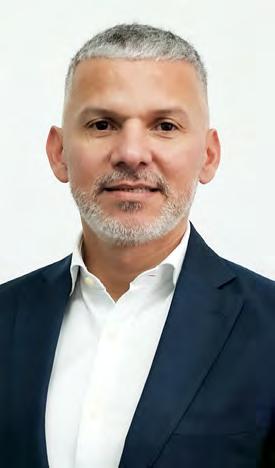
tions, awaiting to be consolidated and available for investment. We are working on updated planning instruments and more flexible regulation for these areas, which add up to126 ha of land and 1,250,000 sq m of building area.” The municipality recently approved plans for a new neighbourhood in the Vale de Santo António, which will allow the construction of about 2,400 dwellings surrounding a new urban park.
At this year’s MIPIM, the Italian Pavilion plans to demonstrate the commitment of the Italian Trade Agency (ITA) to supporting the creation of public-private partnerships. These are seen as crucial to driving the interest of investors, promoting sustainable real estate development and urban redevelopment. Participating in the pavilion will be primary metropolitan areas and regions, open to the development of major, corporate real estate projects across the most attractive asset classes and able to be delivered on time.
The Italian Pavilion will be enriched by many side events with important public and private stakeholders; data, images and information will also be available in various formats, including workstations allowing direct access to investinitalyrealestate.com, a dedicated portal containing development opportunities.
The Italian real estate market recorded an increase in investment volumes
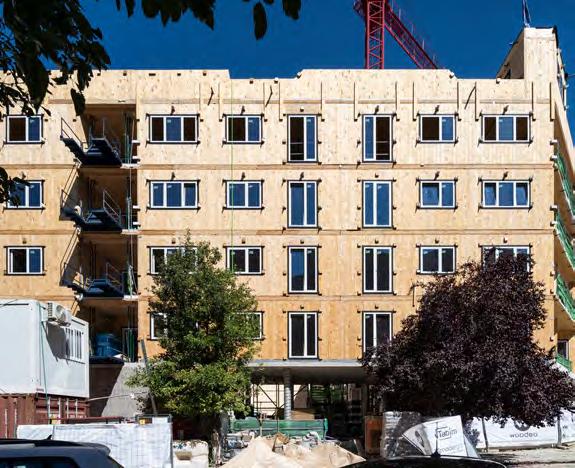
of over 40% in 2024 compared to the previous year, with repricing making the sector attractive again, according to ITA data. The cities of Milan and Rome have once again led real estate capital markets, being home to 60% of total transactions. This positive direction of travel is expected to continue in 2025, as financial markets and real estate demand increase. Asset classes that are likely to be of particular interest in the country include residential, hospitality, logistics and alternative asset class sectors, including data centres and healthcare.
At MIPIM 2025, Invest Cyprus will show how this modern and thriving EU economy offers both international investors and domestic businesses opportunities across a wide range of sectors, says CEO Marios Tannousis. “Traditional sectors, such as shipping, tourism and financial services have been the key driving forces of the island’s economy for years, while new sectors such as technology and startups, renewable energy, investment funds, education and filming offer compelling opportunities for investment,” he says.
Creating value through ideas and nurturing Cyprus’ entrepreneurial spirit are among the country’s top priorities. “Innovative research, a rapidly growing startup ecosystem, highly educated human talent and a range of incentives render Cyprus a perfect choice to start and scale companies,” he adds.
Cyprus is fast becoming one of the top emerging investment fund centres in Eastern Mediterranean and Middle East, offering unique access to high-growth markets. Meanwhile, on the energy topic, the discovery of hydrocarbons in Cyprus’ Exclusive Economic Zone (EEZ) created exciting new prospects for the island to become an energy hub in the Eastern Mediterranean. Finally, tourism is one of Cyprus’ most resilient and strong economic sectors with a significant contribution to the country’s GDP. Strategic large-scale projects, such as luxury resorts, marinas in all major coastal cities and the new integrated casino resort are further stimulating this thriving industry.

Multi-dimensional projects are increasing the appeal of the Benelux region, boosted by its strategic location at Europe’s heart

Several major projects destined for the small but mighty Benelux region are attracting the attention of international investors.
Broeklin Brussels, an ambitious and groundbreaking mixed-use development in northern Brussels, is expected to launch its commercial phase at MIPIM this year. Located on a 12.5 ha site, this project will encompass 156,500 sq m of leasable space (GLA), offering a dynamic mix of cutting-edge retail, flexible office spaces and vibrant leisure opportunities. With the final executable permit received in 2024,
Broeklin is now set to bring its vision to life and become Europe’s most iconic and sustainable destination for work, retail and leisure.
“We’ve worked hard to get to this stage, and receiving the final executable permit in 2024 allows us to take the next step in realising our sustainable vision. Broeklin will set a new benchmark for cities in Europe by integrating sustainability into every aspect of the project,” says Jan Van Lancker, CEO of Uplace.
From energy-efficient technologies and renewable energy sources to the
CONFERENCES & EVENTS AT MIPIM 2025
TECH VS. REAL ESTATE GIANTS: COLLABORATION OR COMPETITION?
TUESDAY, MARCH 11
AUDI K - 16.00-17.00
FUNDRAISING PITCH
SESSION BY PROPTECH LAB
WEDNESDAY, MARCH 12
AUDI K - 11.45 – 12.30
use of sustainable materials, the project ensures minimal environmental impact while offering an eco-friendly environment for work and leisure. Expansive green spaces, pedestrian-friendly paths and innovative water management systems will also enhance the quality of life for all who visit. Additionally, an urban farm will be integrated into the development, providing fresh, locally-grown produce and promoting sustainable agriculture practices within the community. Broeklin will feature an innovative retail concept that combines local craftsmanship with global brands. The develop-

MIPIM Asia gathers top-level real estate professionals from all sectors to build partnerships, gain industry insight and discover the most outstanding projects through a world-class program dedicated to inbound and outbound property investment, regional development opportunities.
Hong Kong
Fall 2025
ment will include “maker stores,” where local artisans and designers can showcase their handmade products, offering a platform for authenticity and creativity. These will be complemented by the latest retail concepts from international brands, creating a unique and diverse shopping experience for local residents and international visitors alike.
“Broeklin’s retail mix brings together the best of both worlds — local makers and international retailers. This is a game-changing concept that speaks to the growing consumer demand for authenticity while maintaining a global retail appeal,” says Luc Verelst, co-founder of Uplace.
“Broeklin is designed as a multi-dimensional destination. It’s where work, leisure and culture intersect, offering an exciting and immersive experience that will keep visitors coming back time and time again,” adds Bart Verhaeghe, co-founder and chairman of Uplace.
As well as mixed-use schemes, a raft of other asset classes are drawing funds and investors to the region.
Dutch real estate developer Edge recently purchased an office building in Rotterdam’s central business district for €54m as part of its growing focus on asset management and its brown-to-green strategy of upgrading existing buildings.
Located at Blaak 555, the 27-storey Five55 building provides 28,500 sq m of prime office space. Originally designed by Murphy Jahn and built in 1996, the 107-metre tower underwent a complete renovation in 2020, bringing it up to current standards and ensuring its continued appeal to tenants.
Onno Saes, director of transactions at Edge, says: “Following the Cross Towers acquisition completed earlier this year, adding Five55 to our portfolio marks a pivotal step for Edge as we expand from developing and retrofitting sustainable properties to actively managing them. This investment highlights our commitment to delivering energy-efficient buildings and addressing the growing demand for sustainable solutions in the market.”
The robust fundamentals of the Benelux region continue to support the market for prime offices. Prime rents
in the region’s major office markets are expected to grow year-on-year between 2024 and 2028, according to Statista data. The Dutch capital Amsterdam is expected to achieve the highest annualised rental growth by 2028, at 2.5%, around 0.4 percentage points above the average rental growth forecast for the major European markets.
The office-adjacent asset class of science parks also has a bright future. A notable, recent deal saw the ASR Dutch Science Park Fund expand its portfolio by acquiring Avery Dennison’s European HQ in Leiden Bio Science Park from LCN Capital Partners. The deal marked the fund’s entry into the Leiden Bio Science Park, adding to its existing holdings at TU Delft Campus South, Biotech Campus Delft and Kennispark Twente.
The Avery Dennison building, a modern and sustainable office and laboratory facility, will continue to be occupied by the global materials science company.
Martin Kraaij, fund director of ASR Dutch Science Park Fund, says: “This acquisition is in line with our fund strategy to expand and diversify our portfolio to different science parks. Leiden Bio Science Park is one of the 19 science parks in the Netherlands where the fund wants to invest and was at the top of our wish list. The acquisition of this sustainable building is a great addition to our portfolio.”
Designed by Paul de Ruiter Architects and developed by OVG (Edge Technologies), the six-storey, 12,154 sq m building boasts a modern design, a striking atrium, and sustainable features (AA++ energy label, BREEAM Very Good).
Hospitality is another segment enjoying particular success in the Netherlands, much of it focused on the country’s tourism attractions. Last year, Fattal European Partnership, the European investment arm of the Leonardo Hotel Group, raised around €420m for its third European hotel fund and struck with a major portfolio deal in Amsterdam. The transaction saw Fattal acquire12 hotels for €360m

from KSL Capital Partners, signalling its intention to continue expanding in the Benelux region. Five of the hotels are in Amsterdam, with the remaining seven located in the cities of Rotterdam, The Hague, Eindhoven, Groningen and Maastricht.
Many investors remain focused on the potential of the logistics asset class in Benelux, which enjoys excellent road and sea connections. Towards the end of 2024, Germany’s Deka Immobilien purchased a newly built logistics property in Aalsmeer near Amsterdam Schiphol Airport from Swiss developer and investor Necron Group.
The Green Square Logistics II/III property, comprising two linked buildings totalling 38,500 sq m with 275 parking spaces, was finished in July 2024 and is fully leased. Contact lens and medical product manufacturer
Bausch + Lomb occupies the larger Building A, while logistics provider JAS Forwarding occupies Building B. The roof is leased to Eneco Solar for a photovoltaic system.
Situated within the 250,000 sq m Green Square Business Campus near Amsterdam’s Schiphol Airport, the property is part of a larger development by Necron Group, consisting of

a modern business park encompassing logistics, office, production, hospitality and storage spaces. It has achieved a “BREEAM Excellent” rating for its sustainable design and construction.
The rewards of diversification await investors in Asia’s thriving markets, where city development strategies mean myriad opportunities

The region’s strong fundamentals coupled with a brighter outlook for global macroeconomic markers are driving foreign capital to explore real estate opportunities in Asia.
For Richard Yue, CEO of Hong Kong-based Arch Capital Management, “unique opportunities” abound in the market. “The acceleration of e-commerce is driving significant demand for modern logistics facilities. The fintech sector, rise of AI and data localisation intensify the need for data centres. New economy real estate offers attractive opportunities in mar-
kets such as Taiwan, Philippines and Thailand,” he says.
However, he signals that “successful diversification in APAC requires certain key elements”. He says: “Investors need to establish strong local partnerships and develop deep expertise in domestic regulatory and market environments. Implementation of appropriate asset management and risk management frameworks is crucial. Above all, success in APAC demands a sustained commitment to the region.”
George Hongchoy, group CEO of Link Asset Management, also notes that “the rapid evolution of ESG has reshaped industry standards” across
CONFERENCES & EVENTS AT MIPIM 2025
JAPAN
WEDNESDAY, MARCH 12
11.00 - 12.00
GEO FOCUS STAGE
the region. While “expanding priorities and ever-shifting expectations are making it challenging for companies to keep pace”, he suggests that “ESG remains critical” to investors and stakeholders in Asia.
Dynamic Japan remains one of the most popular markets for domestic and cross-border capital, with segments including hospitality, residential and even offices providing rick pickings. In the capital, JR East, the East Japan Railway Company, operates the part of the Japan Railways network that covers the Tokyo metropolitan

region and East Japan areas, with 7,400 kilometres of track, 1,681 stations and 15 million passengers per day. Its Shinjuku Station is the busiest train station in the world. In addition to running a vital transportation business, JR East is also a prominent real estate company. At this year’s MIPIM, JR East Group plans to promote the development of towns and lifestyles that heighten the comfort and convenience of daily life. JR East’s participation in the Cannes event will seek to encourage foreign investment in its domestic real estate projects and promote its urban development know-how abroad.
Shota Sakaguchi, an assistant manager for marketing in JR East’s Real Estate and Strategy Division, points out that JR East already has offices in Asia. “In countries such as Thailand and other Southeast Asian countries, urban railway networks are developing, and our company is involved in several projects,” he says. “Leveraging our track record and experience in Japan, we will aim to export a transit-oriented development business model, primarily in Asian countries.”
Yoshihiro Fukui, another JR East marketing chief assistant manager, says

that the increase in population due to economic growth in Southeast Asia, their countries must address issues like air pollution and traffic congestion, problems that TOD can help solve. The main solution that the business will present at MIPIM will be the Takanawa Gateway City redevelopment project. Envisioned as a new global hub connecting Tokyo to the world, Takanawa Gateway City represents the sustainable redevelopment of the northern portion of Tokyo’s Shinagawa Station, and is scheduled to open in stages from March 2025. Its centrepiece, Takanawa Gateway Station, covers 9.5 hectares comprising four “blocks” of mixed-use structures — residential, commercial, office — that JR East has declared “a new international hub for culture and business.”
According to Sakaguchi, JR East’s strongest suit is “understanding how people move through stations and other functions and customising that knowhow for local circumstances.”
As far as inbound investment goes, JR East is hoping to sell some of its properties to foreign investors that JR East Group can manage, as well as invite investors to participate in some of its projects. Their goal is ¥400 bn (€2.5bn) in assets under management by 2027. “We are interested in what overseas real estate professionals are seeking,” Fukui says. “So we look forward to meeting many people at MIPIM.”
South Korea is another country attracting the attention of investors. Capital city Seoul is considered a gateway to some of Asia’s most dynamic real estate markets, according to Bonhi Gu, commissioner of Invest Seoul. “Seoul is rapidly emerging as a premier destination for international real estate investors, blending traditional charm with futuristic innovation,” he tells MIPIM News. “As the capital of South Korea and a leading economic powerhouse, the city offers unparalleled opportunities for investors looking to tap into one of Asia’s most dynamic and advanced markets. Key hotspots include Yongsan, Chang-dong, Magok, and Digital Media City (DMC), each offering unique avenues for global cap-
ital and sustainable growth.”
Yongsan, nestled along the Han River and centrally located near Seoul’s major districts, is renowned for its exceptional geographical advantages that enhance its accessibility and connectivity, he explains. “The Yongsan International Business District (Yongsan IBD) is poised to become one of Seoul’s landmark developments. This project includes highrise towers, vibrant public spaces, and eco-friendly green areas designed to create a compact, self-sustaining urban hub. The district aims to integrate work, living and leisure, while positioning itself as the hub for global companies’ regional headquarters.”
Construction is scheduled to commence in 2025, with the first corporate tenants expected by 2030. Yongsan’s Smart-Eco City initiative will emphasise energy efficiency, smart infrastructure and climate resilience, aligning with Seoul’s vision of a sustainable future. These elements not only cater to global sustainability goals but also ensure long-term attractiveness for multinational enterprises.
Elsewhere, as part of the ‘Gangbuk Renaissance Era’, Chang-dong is being transformed into a thriving economic centre in northeastern Seoul. Central to this vision is Seoul Arena, Korea’s first large-scale music venue, which is expected to draw millions of visitors annually upon its 2027 completion. This landmark project is set to boost local tourism and enhance Changdong’s cultural profile.
“In addition, the area will feature a startup and culture industry complex, fostering innovation and entrepreneurship,” Gu says. “With a total redevelopment area of 247,000 sq m, Chang-dong strikes a balance between cultural enrichment and industrial growth. Improved connectivity and logistics further enhance its potential to become a vibrant nexus for businesses and communities.” He also suggests that investors take note of Magok and Digital Media City (DMC), pivotal hubs driving Seoul’s innovation and global competitiveness. “Together, these districts solidify Seoul’s position as a global leader in future-focused industries and creative innovation,” he says.
for the
transformation and redevelopment
The Middle East is developing a number of ambitious projects, as its diverse nations pursue pioneering urban development goals

Where once the Middle East’s real estate market was best known for outlandish shopping mall developments as Dubai reshaped the global property landscape, now the region has been setting out plans for some of the world’s most ambitious mixed-use projects, especially in Saudi Arabia where the kingdom’s Public Investment Fund (PIF) took another major step in developing the region’s hotel infrastructure in December.
Saudi Arabia’s National Tourism Strategy aims to attract 150 million visitors annually and have tourism contribute 10% of the nation’s GDP as part of Vi-
sion 2030 and the financial driver behind much of the work going on is PIF, which in December launched hotel management company Adeera, as part of its strategy to accommodate a predicted surge in visitors.
It is also intended to help build new world-class Saudi hotel brands and follows a series of investments by PIF in both the tourism and real estate sectors, including hospitality company Boutique Group, which specialises in developing historic and cultural palaces into luxury boutique hotels, agritourism company Dan and tourism investment company Asfar. Meanwhile, giga-project Neom recently launched its first destination, the Sindalah luxury resort located in the Red Sea
HOW GULF ECONOMIES ARE RESHAPING
TOMORROW’S CITIES
WEDNESDAY, MARCH 12
14.00 - 15.00
GEO FOCUS STAGE
the Neom coastline in northwest Saudi Arabia. Designed by yachting architecture firm Luca Dini, it will host restaurants, hotels, venues and experiences, as well as a marina and yacht club.
Among MIPIM participants, multi-asset-class real estate developer ROSHN Group, also a PIF company, has introduced a new identity and strategic focus to expand its remit to include asset classes beyond its core residential offering, including developing mixed-use projects and multi-asset destinations. ROSHN, exhibiting under the Invest Saudi umbrella at MIPIM, has a pipeline of projects and will showcase a range of investment opportunities including Almanar, a new residential
community at Makkah Al-Mukarramah, on show in Cannes for the first time.
The group’s new portfolio will encompass its 200 million sq m of residential property alongside over 4 million sq m GLA of retail, commercial and hospitality; its enabling assets of education, mosques and healthcare; and its opportunity assets of transport and logistics, including warehouses, industrial parks, knowledge hubs, leisure and entertainment.
Meanwhile, King Abdullah Financial District Development and Management Company (KAFD DMC), another PIF company, is joining Invest Saudi at MIPIM for the first time.
Located in Riyadh, KAFD offers a mixed-use environment featuring office spaces, premium residences, retail hubs and cultural attractions. Spanning 1.6 million sq m with 95 buildings designed by 25 international architectural firms, KAFD has been dubbed
the kingdom’s first vertical city and the world’s largest LEED platinum-certified business and lifestyle district.
In addition, Diriyah Company will be presenting the masterplan for a new city on an ancient site with deep connections with the heritage of the KSA. The SAR236bn (€60bn) Diriyah Square project, on the outskirts of the capital Riyadh, will deliver huge tracts of space and assets of every property class across a 14-km site. Once completed Diriyah Square will include 18,000 residential units, with space for 100,000 residents, 1.6 million sq m of office space, 566,000 sq m of retail space and 30 new hotels.
Alfie Gibbs, chief development officer at Diriyah Company, says that the project — known as the City of Earth and close to the ancient Arabian UNESCO World Heritage site of At-Turaif,
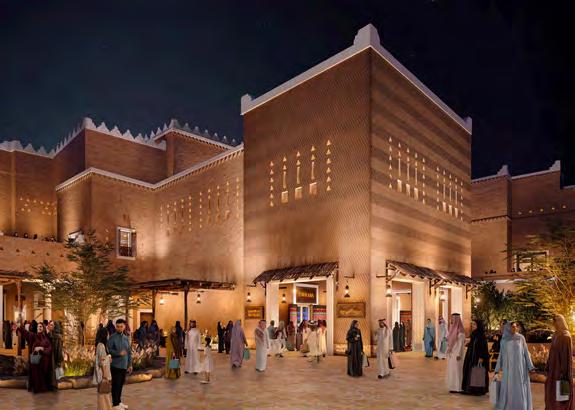
an area considered the birthplace of the Saudi Kingdom — will be “more than just a physical space, it is a celebration of community”, and says that the project is “about building a community, a city that reflects our values. It’s something quite extraordinary.”
“People are fascinated by the project,” he adds of the retail element, which is to be made up of a mixture of local, regional and international brands. Gibbs says: “We’re talking to the biggest brands in the world. We’re open for business. We want to create a brand experience and retail space that gets the local population to stay in Saudi Arabia.”
But not all regional activity is focused on the KSA. In Egypt, late last year a memorandum of understanding was signed to assess development of a public free zone within lands allocated to Administrative Capital for Urban Development (ACUD) in Egypt. The memorandum was signed between ACUD, DP World, and the General Authority for Investment and Free Zones (GAFI) to explore developing a free zone over approximately 500 acres within New Administrative Capital lands.
Around 50km east of Cairo, the new city is rising and already features the tallest tower in Africa and the largest cathedral in the Middle East, and is one of a series of President Abdel Fattah el-Sisi’s grand megaprojects intended to develop the country’s economy.
Construction began in 2016, and is being completed in phases, with more

than 10,000 families now moved in and government ministries relocating to the new city. There are already around 48,000 government employees working there, and in March parliament will start directing its meetings from the city and several banks and businesses will relocate their headquarters there.
Aligning with Oman Vision 2040, the ongoing transformation of Oman’s real estate and urban planning landscape, Oman will be highlighting a commitment to sustainable development, enhancing liveability, and unlocking Oman’s economy, at MIPIM.
“A major highlight is Sultan Haitham City, an ambitious new integrated urban area about 30km from Muscat International Airport,” says Dr. Khalfan Al Shueili, Minister of Housing and Urban Planning, Oman. “It represents a new vision for digitally enabled cities, and how these places can respond to diverse residential, cultural and healthcare needs in a balanced way.”
Projected to house 100,000 people, the city will include schools, parks, youth facilities and a national centre for women’s health, with over 35 development agreements signed and OMR 750m (€1.9bn) already committed to infrastructure and urban development.
The €1.3bn transformation and redevelopment of Al Khuwair downtown and waterfront is another key focus. In support of Muscat’s ambitions to enhance liveability and become a global cultural capital, the 3.3 million sq m transport-oriented masterplan celebrates the city’s historical bond with the sea and incorporates residential and commercial elements, including hospitality and tourism offerings and government ministries. Additionally, new urban plans are under way for areas like Salalah, Sohar and Nizwa, alongside new city plans such as A’ Thuraya City in Muscat.
“Engaging the growing population of young people and fostering innovation remains central to Oman’s future vision. Targeted initiatives, including a Minecraft-based urban design challenge, have empowered them to contribute creatively to Oman’s urban future and nurture the next generation of architects, planners and innovators, while aligning with sustainability and community objectives,” Al Shueili says.
“
Attracted by the solid fundamentals and relatively stable outlook of the US and Canada, global investment flows are expected to be heading west this year
When America sneezes, the world catches a cold,” the saying goes. In the modern world, seismic shifts in America — political, economic, cultural — unquestionably do have real repercussions around the globe. But this year, US real estate investors hope that while much of the world is set to cough and splutter through selfmade political instabilities and ensuing economic pains, North American nations like the US and Canada may well ride on in good health.
In its 2025 US Real Estate Market Outlook, CBRE predicts a 10% increase in capital investment activity this year, boosted by growth in gross domestic product of 2% to 2.5%, unemployment “holding steady” at around 4%, and inflation that will remain “at or slightly below its 2024 rate at 2% to 2.4%”.
And this finding is being supported by forecast analysis from various industry experts, including US-based international real estate advisor Newmark. Newmark’s global head of research, David Bitner, says: “Transaction volumes in the US and Europe have been lower since the sharp rise in interest rates beginning in 2022, but Newmark believes the market is past the trough and demand will begin improving in the medium term, accelerating in the second half of 2025.
“Market fundamentals are improving, and we’re tracking $2trn (€1.95trn) in US debt maturities between now and 2026 that will generate a lot of transactions, be

Singapore’s CapitaLand Ascendas REIT recently acquired the DHL Indianapolis logistics centre
that in the form of recapitalisations or refinances, sales or new loan arrangements.”
The optimism is also being reflected in ongoing transactions — and the recent experience of one major US real estate player is a growing sense that the US is being seen as a “safe haven” against rough global storms. That executive is Laurent Morali, and the firm he runs is Kushner Companies.
Morali says: “There are a lot of crises around the world. It’s a very unstable world.
“The bottom line is that people are always looking for a safe haven. The US represents the safe haven, the US dollar represents the safe haven, real estate is a safe haven, and within real estate, multifamily in particular has been a place where people like to park their money.
“The American investor’s perspective on the European market is a lot less optimis-
AT
THE BIG PICTURE FOR REAL ESTATE TODAY: MACROECONOMICS, ATTRACTING INVESTMENT AND INSURANCE OF REAL ESTATE
THURSDAY, MARCH 13 11.30 - 12.30
THE LEADERS’ PERSPECTIVE STAGE
tic than it was two years ago, five years ago.”
And, Morali says, it’s not just American investors who are retreating to their domestic market — serious money is now flowing into the US and away from Europe, at a marked pace.
“I’m seeing investors from Europe to-
day that were not here two years ago, looking to divest in Europe and invest in the US,” he says. “There’s a constant flow of investors and buyers. They can see that the landscape is changing.”
Of course, in a globalised era, no country can truly be an economic island, isolated from the tides. Canada, too, is weighing up its future following the resignation of prime minister Justin Trudeau less than a week into 2025. CBRE research remains positive, however, noting that “Canada’s longer-term outlook remains solid compared to the G7 and favourable for commercial real estate demand”, adding that “sentiment has been improving and stronger investment activity is expected in 2025 as more capital is drawn off the sidelines”. According to CBRE, with the cost of capital crisis expected to finally ease,
investment and leasing activity will increase in the year ahead. Leasing fundamentals are improving on the whole, though Canada has seen significant amounts of new supply in the office, industrial and residential sectors which will take time to work through. Still, bright spots remain among these asset classes. In offices, occupiers are expected to develop a growth mindset once more, paving the way toward recovery. “Further bifurcation of product with a focus on ‘flight-to-experience’ and a slowdown in new supply will lead to an under-supply of modern, amenitised and environmentally sustainable buildings,” CBRE notes. In the multifamily segment, curbs on immigration and sluggish supply pipelines may have heightened short term uncertainty, but the professional services firm reports that long-term growth fundamentals remain solid.
Jean-Paul Bowgen, principal at New York-based real estate investment firm Camber Creek, cites a number of po-
tential “headwinds” over the year ahead — but also many opportunities.
He says: “The US real estate investment market is experiencing a variety of new headwinds now that were not as prevalent during MIPIM 2024, largely driven by interest rates that are still relatively high compared to recent averages, despite some rate cuts since August.
“Rising construction costs are squeezing new developments, but they’re also creating opportunities in supply-constrained markets. As a result, investors are increasingly exploring alternative asset classes like life sciences, data centres and more.
“Data centres, in particular, are seeing incredible demand growth driven by the exponential rise in AI and cloud computing. To give you a sense of scale, estimates guide that we need 1,500 to 2,000 new data centres globally in the next five years just to keep up with AI’s compute demands.”
Another hot ticket remains industrial, which despite slowing following its post-COVID peak, is still attracting plenty of investor interest. Bitner says that a triple-fold factor of “sound in-


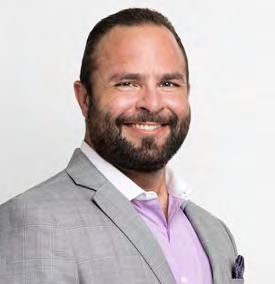
dustrial demand drivers, supply-chain realignments and continued e-commerce growth” means it is still very much a sound investment class.
Likewise, the Canadian logistics sector has been of some concern to investors, for similar reasons — a period of softening demand just as high supply levels reached the market. But again, CBRE is taking an optimistic note, predicting that this will “start to turn as early as mid-2025”, albeit with the caveat that “the return of robust demand levels… could be one to two years away”.
And while alternative asset classes are clearly hot at the moment, Morali is betting on another traditional investment opportunity this year — namely, multifamily — for the simple reason, he says, that there is huge, ongoing demand for this type of residential development within the US and not enough supply to meet it.
New and alternative asset classes come and go. Offices and retail rise and fall with social changes and world events. But it may just be the case that nothing is as safe as houses when uncertainty abounds.

We look forward to welcoming you in Cannes, but first here are some tips to prepare your journey to MIPIM
on Monday 10 March 2025
VISIT THE MIPIM WEBSITE TO ORGANISE YOUR TRAVEL
• Book your transportation & accommodation with our partners to get the best deals.
PREPARE YOUR AGENDA AND MEETINGS AHEAD OF TIME
• Check out the programme of conferences and networking events.
• Log in to the MIPIM Delegate Directory and: - Fill out your profile and personalise your agenda.
- Browse participants and attending companies.
- Send one-to-one messages to other delegates and organise business meetings.
- Upload your photo to link with your badge and access the event.
YOUR PRINT-AT-HOME BADGE
• Your badge will be sent to you by email 2 weeks prior to the show.
• All you have to do is print it and bring it with you, in order to avoid queues.
• You have to upload your photo in your profile in order to download your badge.
ACCESSIBILITY AT MIPIM
• The Palais des Festivals and the Croisette are accessible to all.
OPENING NIGHT
Tuesday, 11 March from 19.00 Croisette and Riviera 9
Open to all.
NETWORKING EVENTS
• Thematic networking events.
• Diversity and inclusion events. CONFERENCE PROGRAMME
Choose among 300+ conferences to stay on top of urban development and investment trends.
MIPIM AWARDS CEREMONY
Thursday, 13 March from 18.30 Grand Auditorium, Palais des Festivals
MIPIM LOUNGE (Palais -1)
• Intended for all participants.
• A meeting and resting area.
Sponsored by :
• Exclusively for visitors with a Premium Pass, who can bring up to 3 guests.
• Includes catering & drinks, boosted wifi and a dedicated staff.
QUIET ROOM
A safe space to retreat whenever you feel overwhelmed by the event environment.
Sponsored by :

• Exclusive club, by invitation only.
• Includes refreshments and a dedicated staff.
• Dedicated to journalists.
• Includes computers, Internet connection, printers and the assistance of a permanent staff member.
• To and from hotels in Cannes and outside.
LACTATION ROOM
Safe and private space for nursing, with lockable door, comfortable seating, access to electric outlet, and proper storage for breast milk.
PRAYER ROOM
A quiet space for attendees of all faiths to pray and reflect during the event.
DONATION ROOM
Donate the materials you won’t take home at the end of the show to support local charities.
Croisette zone
C10 Qatari Diar Real Estate Investment
C11 Transforming Roma
C12 Grand Paris
C14 London Stand
C14B Invest Saudi
C15A Berlin, City of Berlin
C15B Manchester
C16A Egypt Pavilion
C16D Cardiff Capital Region
C16E Otis Elevator Company
C16F Ministry of Housing and Urban Planning, Oman
C16G Investment Promotion Agency Qatar LLC
C16H TK Elevator
C17 CBRE Limited
C17B PATRIZIA SE
C19 MIPIM Croisette Village
C20 Invest Saudi
C21A HTL Connection
GLOBAL CONFERENCE PROGRAMME SPONSORS

RE-INVEST SPONSORS
PLATINUM SPONSOR

PREMIUM LOUNGE SPONSOR




SPONSOR
HTL CONNECTION SPONSORS & PARTNERS

FORUM DES ÉLUS PARTNERS


WORKSHOPS CONTENT PARTNERS

ROAD TO ZERO






UK HUB SPONSORS & PARTNERS






CONFERENCES SPONSORS & PARTNERS

































DIVERSITY & INCLUSION PARTNERS











Opening Keynote – Tuesday 11 March – 15.00 -16.00 – Grand Auditorium Stage
Mario Draghi served as President of the Council of Ministers of Italy from February 2021 to October 2022. His tenure as Prime Minister was defined by many memorable achievements, most notably including the fight to end the Covid-19 pandemic, his leadership of the Next Generation EU initiative, and his solidarity with the Ukrainian people during the ongoing war with Russia.
Described by Paul Krugman as “[arguably] the greatest central banker of modern times,” Dr. Draghi was President of the European Central Bank (ECB) from November 2011 to November 2019 and is widely credited with saving the Eurozone. Over his eight-year term, the monetary policy of the ECB led the Eurozone into an expansion with the creation of 13 million jobs, and the European stock market rising by two-thirds.
Mario Draghi has been at the center of the most globally impactful economic events of the last four decades, including the 2012 Eurozone crisis, the 2015 Greek Debt Crisis, and Brexit. Prior to 2011, Dr. Draghi served as Governor of the Banca d’Italia and Chairman of the Financial Stability Forum (later the Financial Stability Board) that crafted for the governments of the G-7 countries the first regulatory response to the global financial crisis. Drawing on these extraordinary experiences, Dr. Draghi is among the most well-equipped experts to provide analysis on the future direction of the global economy.
Dr. Draghi was listed as the 8th most powerful person in the world by Forbes in 2014 and the world’s second greatest leader by Fortune in 2015. He received his PhD in Economics from the Massachusetts Institute of Technology.
Dr. Draghi is globally known for his bold and spirited speeches. He simplifies the world financial outlook, giving audiences the keys to understanding what is needed to control risks and translates uncertainty into tangible takeaways for audiences worldwide.

ANDREA AGRUSOW Managing Director / COO GARBE INDUSTRIAL REAL ESTATE GMBH

ANDREW ANGELI
Head of Real Estate Research & Strategy
INSURANCE


KHALED ABBAS Chairman & Managing Director ADMINISTRATIVE CAPITAL FOR URBAN DEVELOPMENT (ACUD)

COSTANZA BALBONI CESTELLI Head of Data & Innovation GENERALI REAL ESTATE



PAMELA AMBLER
of Investor Intelligence & Strategy Capital Markets, Asia Pacific
LANG LASALLE PROPERTY CONSULTANTS PTE LTD


DANILO BATISTA
- Founding Partner D&P ARQUITETURA

LEM BINGLEY Editor PROPERTY WEEK
FRANCE



MATTHEW BLACK Climate Action Manager WORLD GREEN BUILDING





CHANTAL CLAVIER Partner, Head of Real Estate HEIDRICK & STRUGGLES














Pr. JANE FALKINGHAM Vice President - Engagement & International UNIVERSITY OF SOUTHAMPTON COURTNEY FINGAR Founder FINGAR DIRECT INVESTMENT






GALLEGO CEO KTESIOS SOCIMI AND RKS-AM





















ANTHONY HOBLEY Deputy Chair HOWDEN

ROLAND HUNZIKER Director Built Environment WBCSD (WORLD BUSINESS COUNCIL FOR SUSTAINABLE DEVELOPMENT)

SHOBI KHAN CEO CANARY WHARF GROUP

JOONAS LEMSTRÖM Head of Nrep Finland NREP OY

VALENTINA MAURO Managing Director EVORA GLOBAL


CHRISTIAN JANSSEN Head of Debt - Europe NUVEEN REAL ESTATE

SASCHA KLAUS CEO BERLIN HYP AG


RONEN JOURNO Head of European Management Services HINES EUROPE LTD


ANDREAS HORN Head of AIOps IBM

PHILIPPE JOURNO President COMPAGNIE DE PHALSBOURG

DEE KORAB Founder and Managing Director SPARKD

DOUGLAS LOEWE CEO KAO DATA

ANTON MCGARVEY Director COLLIERS INTERNATIONAL PROPERTY CONSULTANTS





MACMILLAN Vice President, Asset Management GROSVENOR - PROPERTY AMERICAS

FRANCES MOFFETT-KOUADIO Strategic Investment Director THAMES ESTUARY GROWTH BOARD

BILL HUGHES Global Head of Real Assets and Co Head of Private Markets LEGAL & GENERAL INVESTMENT MANAGEMENT

AKINORI KANAYAMA Executive Officer TOKYU CORPORATION

ERIC LANG Senior Managing Director TEACHER RETIREMENT SYSTEM OF TEXAS


DAN HUGHES Director ALPHA PROPERTY INSIGHT

Unesco Ambassador UNESCO

LEECH Chief Executive BRITISH PROPERTY FEDERATION

KANJI MATSUSHITA Executive Officer and General Manager TAKENAKA CORPORATION


ITSUHIRO MIURA Deputy Director-General, City, Housing MINISTRY OF LAND, INFRASTRUCTURE, TRANSPORT AND TOURISM TIM MOONEN Co-Founder and MD THE BUSINESS OF CITIES




MAHDI MOKRANE Co-head of Fund Mngt, Head of Fund Mngt RE & Invt Strat. & Research, CIO Europe ex-DACH PATRIZIA PROPERTY INVESTMENT MANAGERS LLP





Mayor CITY OF HANNOVER


MAARTEN OTTE Head of Investor Relations CTP

ANTONIN PRADE Investment Director M&G REAL ESTATE






INGRID STEMMER Director - Founding Partner STEMMER RODRIGUES ARQUITETURA




COLIN WILSON Chief Executive, EMEA CUSHMAN & WAKEFIELD






ROBINSON Leader LIVERPOOL CITY COUNCIL

NAOMI SAKAMOTO Studio Director, Principal GENSLER





CLLR SHANTANU RAJAWAT Leader of the Council LONDON BOROUGH OF HOUNSLOW





VALESKOG Vice Mayor CITY OF STOCKHOLM


LISETTE VAN DOORN Europe CEO ULI

EINAR THORSTEINSSON Mayor REYKJAVIK


PAULO HENRIQUE RODRIGUES Director - Founding Partner STEMMER RODRIGUES ARQUITETURA

SKOVBRO CEO COPENHAGEN CITY & PORT


Debate big picture topics and investment trends, including how to be a change maker, demographic change, and the latest macroeconomics, finance challenges and rising insurance costs.
Dive into the deep end and find out firsthand about the many innovative initiatives the real estate community is taking on the road to net zero. Walk away feeling inspired to do even more.
New stage dedicated to hotel and tourism!
Gain insights into the latest investment trends and strategies, retrofitting and repurposing projects, and tech innovation in the F&B, and the corporate, resorts and luxury hospitality sectors.
In 2025 the Make it happen stage will focus on attracting talent on Tuesday, how to make the best of Artificial Intelligence on Wednesday and successful public private partnerships on Thursday. Thursday Make it happen to be hosted in our new conference venue in Gare Maritime.
Hear all you need to know via six comprehensive workshops on residential, logistics, offices, healthcare, data centres and life sciences. Network, learn and debate with your peers in these not to-be-missed sessions
Join special dedicated focuses on the key MIPIM markets of France, Germany, the Nordics, Gulf, Africa, Asia, and Central and Eastern Europe.
Explore the latest trends, opportunities and challenges in this dedicated stage for the UK.
Discover our new conference venue with a view in 2025!
The Gare Maritime (registration venue in 2024), will now host MIPIM outstanding events such as the Forum des Élus and Equality of opportunities in real estate on Wednesday, the Public Private Partnerships Make it Happen stage on Thursday, and much more!
13.00 - 22.00
Grand Auditorium

Creating a new deal
The Housing Matters! conference will kick off on Monday afternoon, exploring the mismatch between housing supply and demand. Housing Matters! brings together investors, developers, local authorities, associations and urban experts to explore the latest trends in supply and demand, collaborative solutions for affordable housing, new housing models that match the products to the current needs and share visions of innovative housing of tomorrow.
14.00 - 13.00 Welcome coffee
14.00 - 14.10 Introduction
14.10 - 15.00 The Trend - Supply Does Not Match Demand
15.00 - 16.00 Collaborative Solutions for Affordable Housing
16.00 - 16.30 Coffee Break
16.15 - 17.30 Housing Reboot Workshop (Salon Croisette)
16.30 - 17.30 The Goal - Adapting housing products to the needs
17.30 - 17.55 Paths for Tomorrow
17.55 - 18.00 Closing Remarks
17.55 - 18.00 Networking Cocktail
16.00 - 22.00
Hotel Martinez

The RE-Invest Opening and evening dinner By invitation only
RE-Invest has been providing for over a decade now at MIPIM an exclusive opportunity for sovereign wealth, pension and insurance funds and other capital owners to debate investment strategies for real estate in developed and emerging markets. Before the dinner, guests will answer the intriguing questions “What is keeping you awake at night?” and “What are you most excited about?”




















- 10.40
Metropolises in Motion: Liège and Lille, Attractiveness at the Core


Transorfming yesterday’s spaces into tommorow’s cityscapes. A dialogue between Charleroi and Nantes Métropole.



- 11.00
and contractualization: Understanding the specificities of hotel asset leases
- 11.40 Shifting sands: the impact of falling interest rates on hotel investments and asset values
- 15.00























President of the jury
Véronique BEDAGUE
Nexity
CEO
France
Melike ALTINIŞIK
MAA - Melike Altınışık
Architects
Founder Türkiye
Stéphanie BENSIMON
Ardian France
Head of Real Estate
France
Aaron BLOCK
Metaprop
Co-founder & Managing Partner US
Guy GRAINGER
JLL
Global Head of Sustainability Services & ESG UK
Ann GRAY
Gray Advisors CEO US
Karim HABRA
Partners Group AG
Global Co-Head of Real Estate
Switzerland
Jani NOKKANEN Nrep Partner & CIO Finland
Justin SULLIVAN RICS
President UK
Camilla VAN DEURS
Nordic Office of Architecture
Partner & Adj. Professor
Denmark
Katarzyna ZAWODNA-BIJOCH
Skanska Commercial
Development Europe
President & CEO, CEE Region
Poland
The entries are in, the jury deliberation is complete, and now it is over to the MIPIM delegates to choose the top projects of 2025 from the real estate world. From a large selection of entries, the MIPIM Awards jury, chaired by CEO of Nexity, Véronique BEDAGUE, has drawn up a shortlist of three to four projects in each of 10 categories:
• Best Conversion Project
• Best Cultural, Sports and Education Project
• Best Hospitality, Tourism and Leisure Project
• Best Industrial & Logistics Project
• Best Mixed-use Project
• Best Residential Project
• Best Urban Regeneration Project
• Best Workplace Experience
• Best New Development
• Best New Mega Development
The winners will be chosen on a 60:40 basis: 60% based on the jury vote, and 40% from the votes cast on-site by MIPIM delegates. In addition, the jury of real estate experts from around the world have the right to award one extra prize – the ‘Special Jury Award’, which goes to their favourite project amongst all the finalists considered.
Be sure to visit the Awards Gallery, in the Palais des Festivals, between 9.00 on Tuesday 11 March and 12:00 (Noon) on Thursday 13 March to view the shortlisted entries in more detail and to cast your vote.
Don’t forget to mark in your agenda the awards ceremony at 18.30 on Thursday 13 March in the Grand Auditorium.
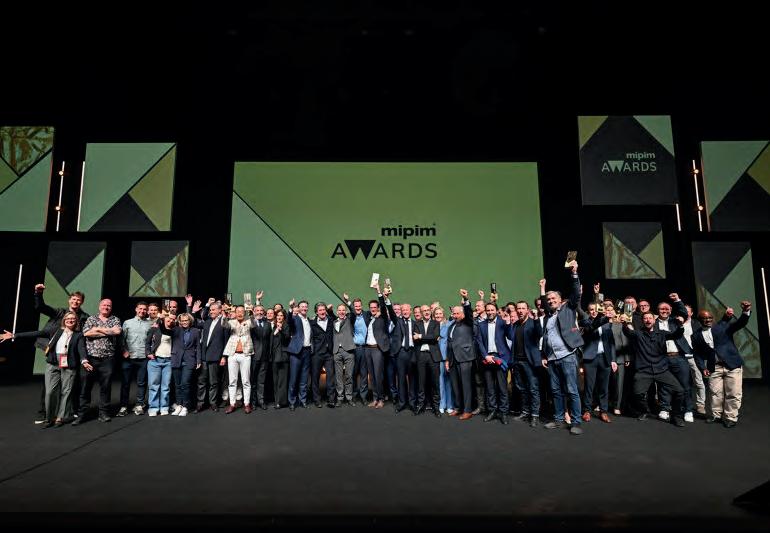
MIPIM AWARDS ONSITE VOTE
At the Awards Gallery
From Tuesday 11 March (9.00) to Thursday 13 March (Noon)
AWARDS GALLERY, PALAIS -1
MIPIM AWARDS CEREMONY
Thursday 13 March (from 18.30)
GRAND AUDITORIUM
Followed by a cocktail, open to all participants


Green Bunker
Hamburg, Germany
Architect: NTER±POL Interdisziplinäre Studios GmbH/Metapol (LP 1-4): Michael Kuhn, Tim Schierwater, Mathias Müller-Using/Managing Director
Developer: EHP Erste Hanseatische Projektmanagement GmbH; Matzen Immobilien GmbH & Co. KG INTER±POL Interdisziplinäre Studios GmbH (Concept): Robin Houcken, Mounaim Errati, Mathias Müller-Using
Others: Leaseholder/Builder: Matzen Immobilien GmbH & Co. KG; Initiator/First Draft: Mathias Müller-Using; Public participation process: Nadschja Müller-Using, Hilldegarden e.V.; BUERO 51 Architekten PartG mbB, Tilman
Winter (LP 4); phase10 Ingenieur- und Planungsgesellschaft mbH (LP 5-8) ; Green concept & Landscape planning: INTER±POL Interdisziplinäre Studios GmbH: Lars Rühmann a.o., Landschaftsarchitektur+ PartG mbB; Structural Engineering: s,b,p schlaich, bergermann, partner; Wetzel v. Sehrt
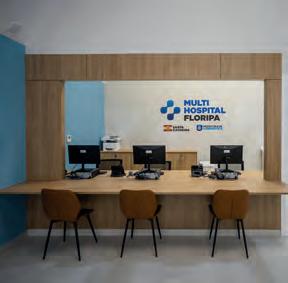


Florianópolis
Florianópolis/SC, Brazil
Architect: Marcus Vinicius da Silva
Developer: Plena Malls S.A. / Prefeitura Municipal de Florianópolis / Centro Comercial Carianos SPE LTDA.
Others: Concessionaire: Zurich Airport Brasil (Concessionária do Aeroporto Internacional de Florianópolis S.A); Construction Company: Voss Engenharia LTDA; Construction Manager: Ligia Voss
Zwijnaarde, Belgium
Architect: POLO.platform
Developer: Alinso
Others: SHAKE design (interior architect); Pieterjan (interior architect), Jan Joris Tuinarchitect (Landscape Architect); M-gineers (structural engineer); VK architects+engineers (MEP, EPB and acoustical engineering)
Terminal Warehouse
New York, USA
Architect: COOKFOX Architects
Developer: Columbia Property Trust, L&L Holding Company & Cannon Hill Capital Partners
Others: Institutional investors advised by JPMorgan Asset Management
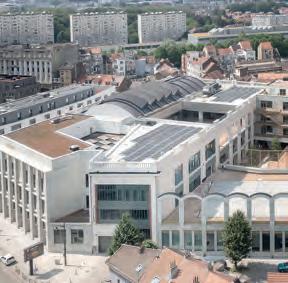
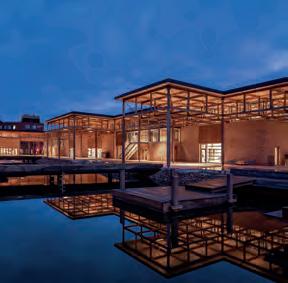

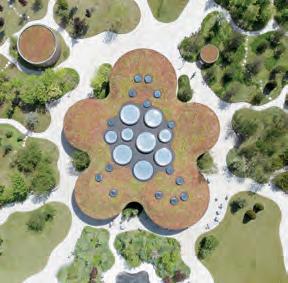
Egied van Broeckhovenschool
Brussels, Belgium
Architect: B2Ai architects; B2Ai interior design; Stefaan Thiers landscape architect
Developer: School group: Vzw Ignatius Scholen in Beweging; Project director: PREO
Others: Team DBFM; Consortium ABC 02 (Invesis / Alheembouw), VK Architects & Engineers (Stability & building physics), Alheembouw (contractor), BAM FM (operations & maintenance)
‘Håndværkskollegiet’ -
The Crafts College in Horsens
Horsens, Denmark
Architect: Cubo Arkitekter & DANØ Arkitekter
Developer: BRFfonden, Fonden for Håndværkskollegier
Others: Turnkey contractor: Nordstern, Engineering: Tri-Consult, Landscapearchitects: Schønherr
The new ESCP
Business School Turin
Campus - A BNL BNP
Paribas regeneration project by Toussaint
Robiglio Architects Turin, Italy
Architect: TRA -TOUSSAINT ROBIGLIO ARCHITETTI
Developer: BNL BNP PARIBAS

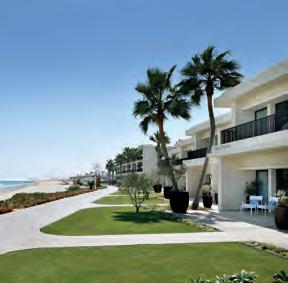
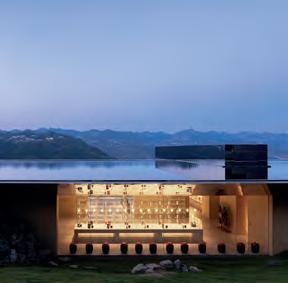
The Opera Park
Copenhagen, Denmark
Architect: Cobe
Developer: The Opera Park Foundation. Donation by the A.P. Moller Foundation
Others: Vita, Via Trafik, DBI, and Lüchninger Meyer Hermansen
Dorothea Hotel, Budapest, Autograph Collection
Budapest, Hungary
Architect: Lissoni Casal Ribeiro
Developer: BDPST Group Hungary
El-Alamein Hotel
Marsa Matrouh, Egypt
Architect: Whitespace Architects - WSA
Developer: Emaar Misr
Luzhou, China
Architect: Mathieu Forest architect / Zone of Utopia
Developer: Sichuan Gulin Langjiu Distillery Co., Ltd.
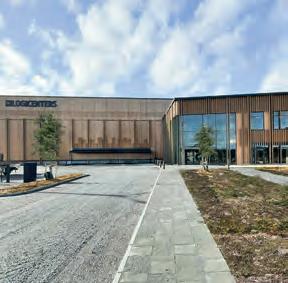
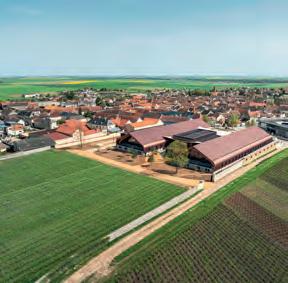
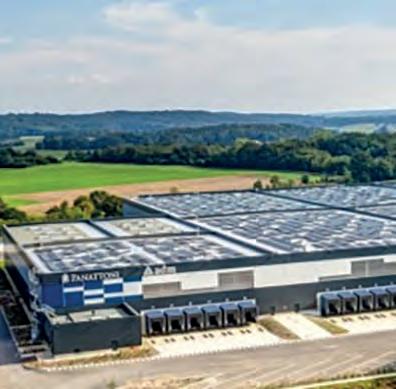
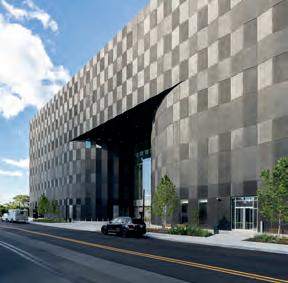
Innovation Project
Bålsta
Bålsta, Sweden
Architect: Equator Stockholm
Developer: Urban Partners’ real estate arm Nrep.

Dojima Project
Osaka, Japan
Architect: Nikken Sekkei Ltd., NIKKEN HOUSING SYSTEM LTD
Developer: Tokyo Tatemono Co., Ltd. Hotel Properties Limited, Four Seasons Hotel and Resorts
Others: Interior Designer for Residential Common Area: Studio Piet Boon, Hotel interior designer: CURIOSITY, SIMPLICITY, DESIGN STUDIO SPIN
Joseph Ambonnay,
Architect: AW2 architecture & interiors
Developer: Krug/MHCS
Others: GNAT Ingénierie
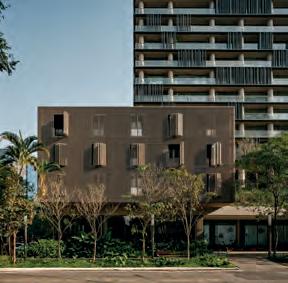
São Paulo, Brazil
Architect: Studio Arthur Casas
Developer: Management: Estancorp // Development and Ownership: Concivil Incorporadora + Stan Desenvolvimento Imobiliário
Others: Director of architecture: Gabriel Ranieri / Director of interiors: Nara Telles / Project Manager: Cadu Villela and Fabiola Andrade / Collaborators: Architecture: Paula Real, Adriano Bergemann, Reginaldo Machado, Gabriela Godinho, Beatriz Mendes, Roberto Cabariti, Luciano Sessa / Interiors: Rafaela Franco de Barcelos, Ana Paula Mendes, Raimundo Borges, Alessandra Mattar, Miti Sameshima / Decoration: Marcella França, João Lisboa, Victoria Chaves / 3D Artist: Natália Lorenzoni, Augusto Mattos, Valentina Lindner, Amanda Tamburus, Ana Maria Pedreschi, Marcelo Bicalho / Construction Company: Barbara Engenharia e Construtora
Panattoni Park
Beauvais
Allonne, France
Architect: SOHO
Developer: Panattoni France and ADM
Others: Neodyme
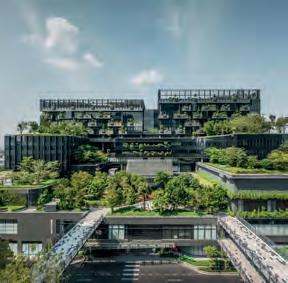
Wildflower Film Studios
New York City, USA
Architect: Bjarke Ingels Group
Developer: Wildflower Ltd.

True Digital Park West
Bangkok, Thailand
Architect: A49
Developer: WHIZDOM LANDMARK CORPORATION COMPANY LIMITED
Others: TK Studio Company Limited, M Space, G49 Limited, PIA Interior Company Limited, Bo Steiber Lighting Design Thailand (BSLD), G49, Infra Technology Service, EEC Engineering Network, PIA Interior, TK Studio, Bo Steiber Lighting Design (BSLD), ATELIER TEN, Trusty Project Management, BouyguesThai, Depth of Field Company limited
Utrecht, The Netherlands
Architect: Stefano Boeri Architetti & MVSA Architects
Developer: G&S&
Others: a.s.r. real estate, Boele & van Eesteren, Kondor Wessels Amsterdam bv, Gemeente Utrecht, VolkerWessels, INBO, Koninklijke Ginkel Groep, Arcadis, Beyond Space, Heyligers




Curitiba, Brazil
Architect: ARCHITECTS OFFICE + Triptyque
Developer: AG7
Others: Contractor: TEICH Engenharia | Landscaping: Renata Tilli | Interiors: Suíte Arquitetos
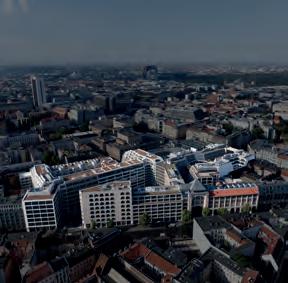
Maple House
Toronto, Canada
Architect: Cobe, architects—Alliance, Claude Cormier et Associés, Design Agency
Developer: Dream Asset Management, Kilmer Group, Tricon Residential
Others: Thornton Tomasetti, RWDI, Cole Engineering, MV Shore, BA Group, EllisDon
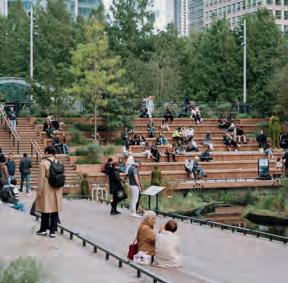
Berlin, Germany
Architect: Herzog & de Meuron, Brandlhuber+ Muck Petzet, Grüntuch Ernst, RKW Architektur +
Developer: pwr development GmbH
Eden Dock
London, UK
Architect: Howells and Landscape
Architect: HTA Design
Developer: Canary Wharf Group
Others: Project Ecologist: Greengage Engineering: Arup Lighting Design: Studio Fractal Marine Engineer: Arup
Consultant: Eden Project Consultant: Canal and River Trust Planning Authority: London Borough of Tower Hamlets
The Beehive
Hamburg, Germany
Architect: WERK
Developer: Baugemeinschaft Halbinsulaner
Others: Schuessler-Plan Ingenieure, M+P, GRAD

Fuzja (Fusion)
Łódź, Poland
Architect: Medusa Group
Developer: Echo Investment Group, Archicom
Others: CitySpace – coworking space. KGAL – investor
UN17 Village
Copenhagen, Denmark
Architect: Sweco Architects and Lendager
Developer: Urban Partners’ real estate arm Nrep

Railway Integration
Project in the city of Logroño
Logroño, Spain
Architect: Abalos+Sentkiewicz (Urban Desing and Architecture)
Developer: LIF 2002, SA (Logroño Integración del Ferrocarril 2002, SA)
Others: Teresa Galí (Landscaping), ARUP, TYPSA (Engineering), SACYR, AGUA Y JARDÍN, ISMAEL ANDRÉS, ASBECA (Construction companies)

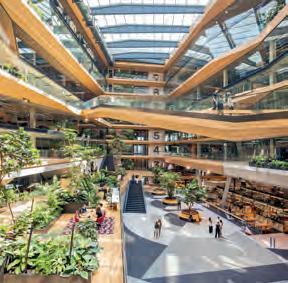


Arbor, Bankside Yards
London, UK
Architect: PLP Architecture
Developer: Native Land (developer): Native Land, Temasek, Hotel Properties Limited, Amcorp Properties Berhad (joint venture partners)
Others: Multiplex, Sweco, Gardiner & Theobald, AKT II, Stiff + Trevillion

Booking.com City Campus
Amsterdam, The Netherlands
Architect: UNStudio – Architect / HofmanDujardin – Lead Interior Architect
Developer: BPD
Others: CBRE Design Collective, i29 interior architects, Linehouse, Studio Modijefsky, Mijksenaar, MOSS, Powerplant, Scholten & Baijings, Studio Rublek
La Garenne Colombes, France
Architect: SCAU / Chaix et Morel / Art&Build
Developer: NEXITY IMMOBILIER D’ENTREPRISE
Others: Paysagiste BASE
DOXS NKLN
Berlin, Germany
Architect: GRAFT
Developer: Trockland DOXS GmbH
Others: Schöne neue Welt Ingenieure GbR Berlin Snw-ing.de; Servisa Baumanagement GmbH Berlin Servisa-gruppe.de; SCHIRMERPARTNER Landschaftsarchitekten BDLA schirmer-partner.de; imKONTEXT. berlin GmbH imkontext.berlin; Transsolar Energietechnik HmbH Transsolar.com; WISSBAU Beratende
Ingenieurgesellschaft mbH; BeSB GmbH Berlin Schalltechnisches Büro Maul + Partner Baugrund-Ingenieurbüro
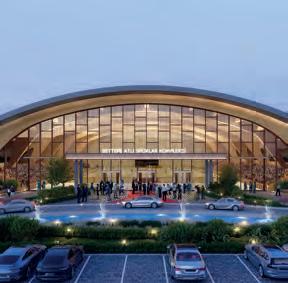

TRÆ
Aarhus, Denmark
Architect: Lendager
Developer: PFA Ejendomme, Kilden & Hindby
Others: Aarhus Kommune, Artelia, Kaj Ove Madsen Entreprenører, Realdania

Beytepe Equestrian Sports Complex
Ankara, Türkiye
Architect: SP Architects
Developer: Ministry of Environment, Urbanization, and Climate Change of the Republic of Turkey; Turkish Traditional Sports Federation; Traditional Sports Youth and Sports
Others: Architectural Concept Consultant: Ahmet Yılmaz; Structural Engineering: Perform; Electrical Engineering: ENM; Mechanical Engineering: OTM
National Concert Hall Vilnius, Lithuania
Architect: Arquivio Architects
Developer: Vilnius Development
The Hive (thehive.amsterdam)
Amsterdam, The Netherlands
Architect: OZ Architect
Developer: ION and Green Real Estate
Others: Heddes Bouw & Ontwikkeling (contractor), Flux (landscape architect), Arup & CDC (sustainability), Drietech & Verhoef (technical engineering), Van Rossem (structural engineering), Wellsius (ESCO)

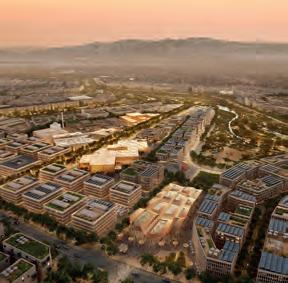


Lisbon, Portugal
Architect: KPF, Saraiva + Associados, Gensler, Promontório, Siza Vieira, Souto do Mora, Ana Cost
Developer: Fidelidade Property Europe
Others: Fosun Hive Iberia (Development Manager)
Sultan Haitham City
Muscat, Oman
Architect: Master Planner: Skidmore Owin & Merrill (SOM) | Detailed Engineering Design: Meinhardt Group Singapore
Developer: Ministry of Housing and Urban Planning and other developers
Shenzhen Construction
Industry Ecological & Intelligent Valley Headquarters
Shenzhen, China
Architect: Aedas, CAPOL International & Associates Group, MLA+B.V
Developer: Shenzhen Longgang District Urban Construction Investment Group Co., LTD
Towarowa22
Warsaw, Poland
Architect: JEMS Architekci
Developer: Echo Investment Group, Archicom
Others: AFI Europe Poland – Investor
Followed by a cocktail reception open to all participants
Thursday 13 March 2025, from 18.30 Grand Auditorium, Palais des Festivals








